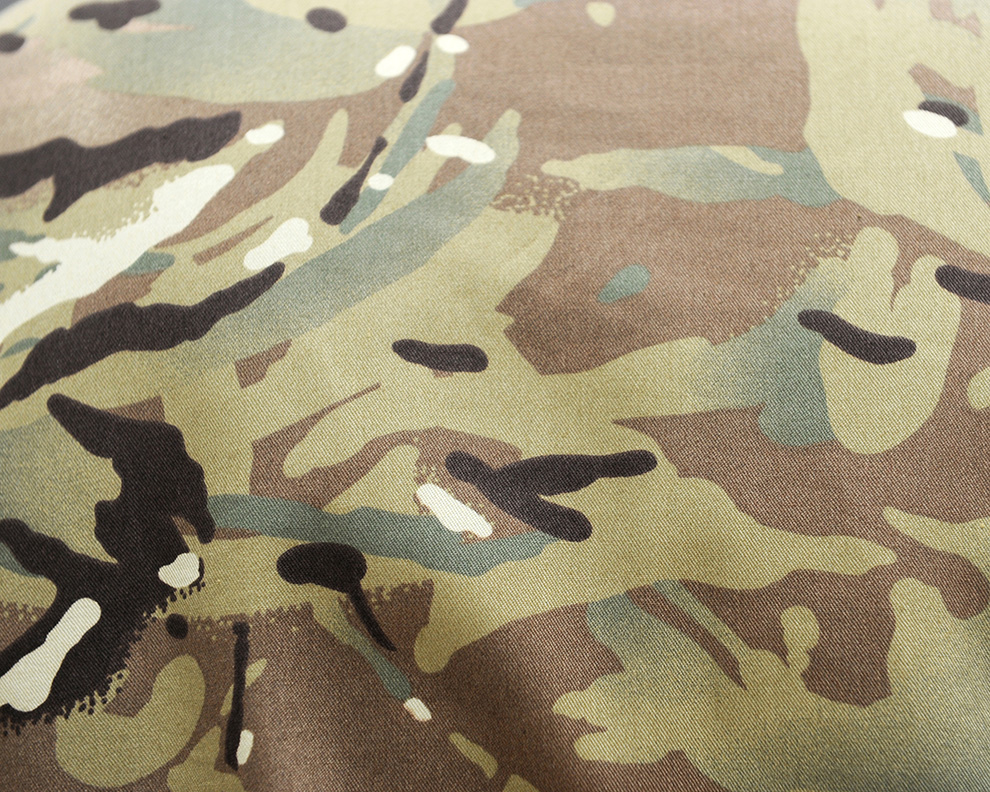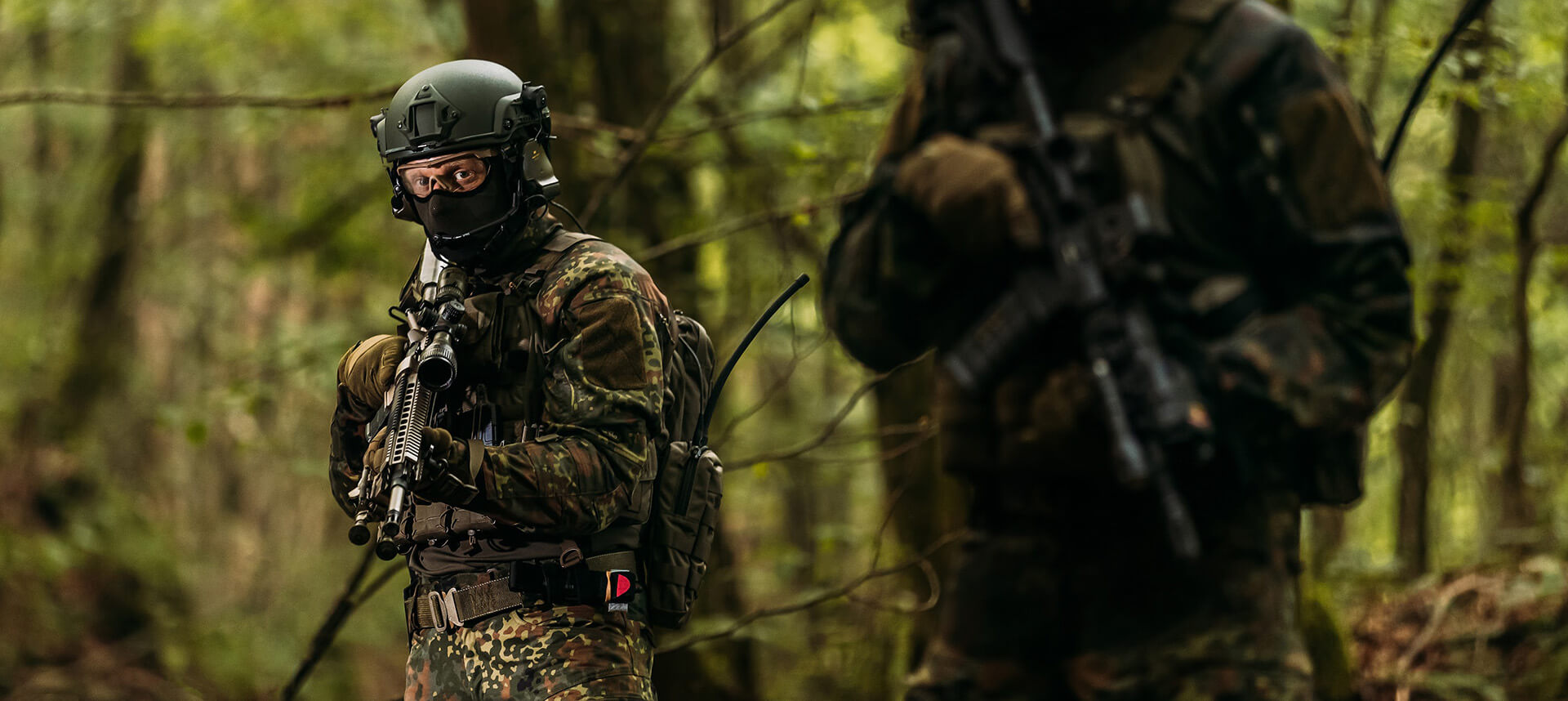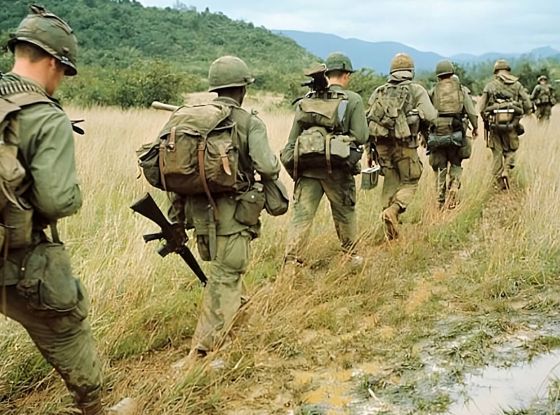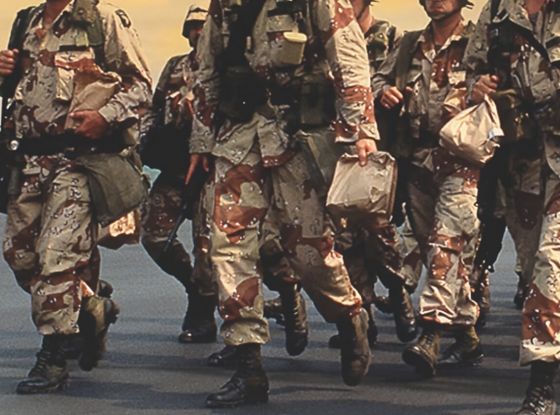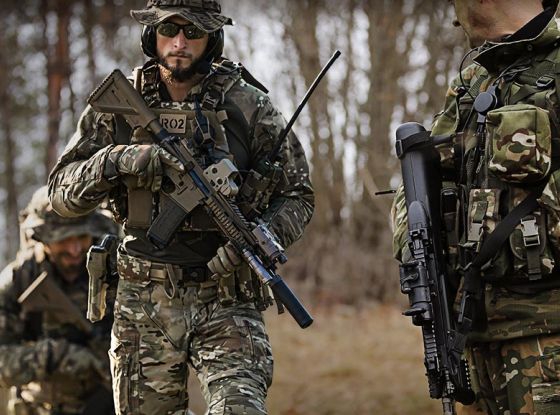Across the diverse terrains of Europe, from the thick woods of Scandinavia to the rugged mountain ranges of the Balkans, the strategic demands of operating in varying environments have led nations to develop and adopt distinct camouflage patterns. These designs are meticulously tailored to offer tactical advantages in specific geographical regions, ensuring that military personnel remain concealed and efficient in their operations.
In this blog post:
- Introduction
- Albania
- Austria
- Belarus
- Belgium
- Bosnia and Herzegovina
- Bulgaria
- Croatia
- Cyprus
- Czech Republic
- Denmark
- Estonia
- Finland
- France
- Germany
- Greece
- Hungary
- Ireland
- Italy
- Latvia
- Lithuania
- Luxembourg
- Malta
- Moldova
- Montenegro
- Netherlands
- North Macedonia
- Norway
- Poland
- Portugal
- Russia
- Serbia
- Slovakia
- Slovenia
- Spain
- Sweden
- Switzerland
- Ukraine
- United Kingdom
Introduction
In this blog, we provide an overview of various European countries and their official camouflage designs. Each pattern has been crafted through rigorous testing, analysis, and adaptation based on real-world operational needs and the unique landscapes these forces operate within.
However, a word of caution: our list is not all-encompassing. Some countries have been excluded due to either inconclusive data or the lack of comprehensive information. Despite this, we've aimed to give tactical operators a valuable reference point, highlighting the strategic thought and precision that goes into every camouflage pattern.
Albania
This unique camouflage design is being fielded by the Armed Forces of Albania, having first appeared in November of 2012 during the 100th anniversary of the Albanian state. Although there are obvious color similarities to German flecktarn pattern, the design itself bears little resemblance up close, and is, in fact, partially based around pixelated drawings, while also incorporating larger, more organic shapes. This blending of pixelation with organic shapes remains uncommon.
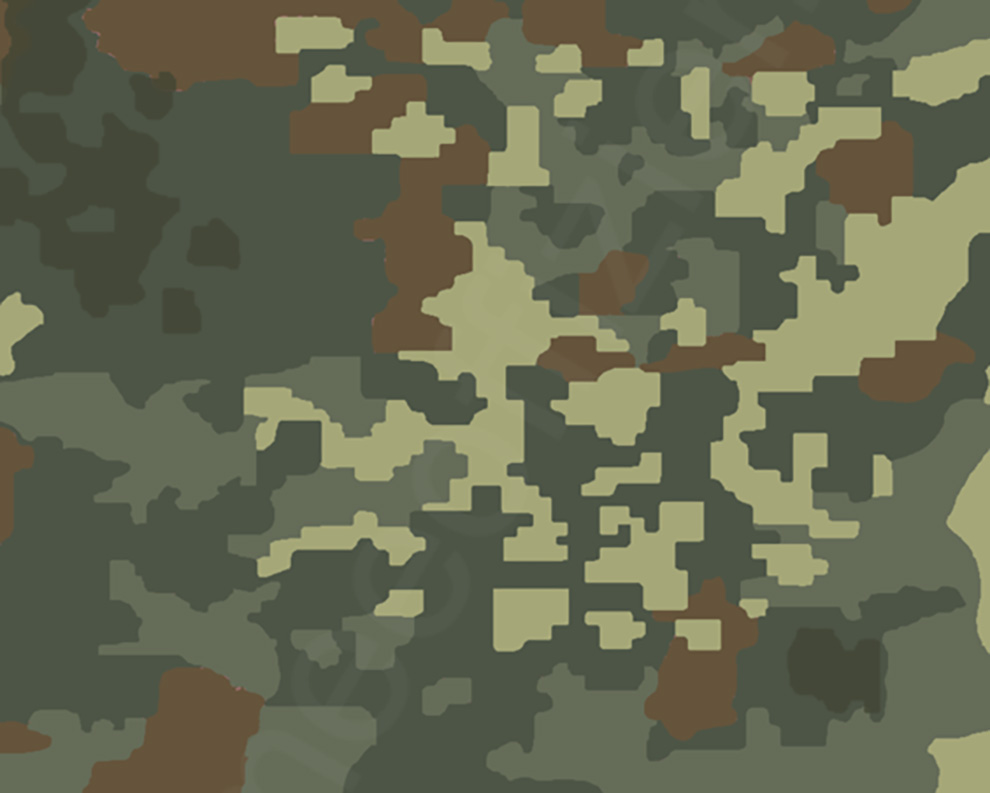
Austria
In September 2017, the Austrian Minister of Defence announced a new camouflage uniform for the Bundesheer (Austrian Armed Forces) named the Tarnanzug Neu. This was to replace the old solid color uniforms, known for their famous RAL 7013 color. The new camouflage pattern was introduced with a unique design, which garnered mixed reactions from the public and soldiers. The Tarnanzug Neu is designed as a multi-environment camouflage pattern, aiming to provide "good enough" concealment in most areas rather than perfect camouflage in specific environments. The pattern uses spots instead of digital elements, differing from other Austrian camouflage patterns.
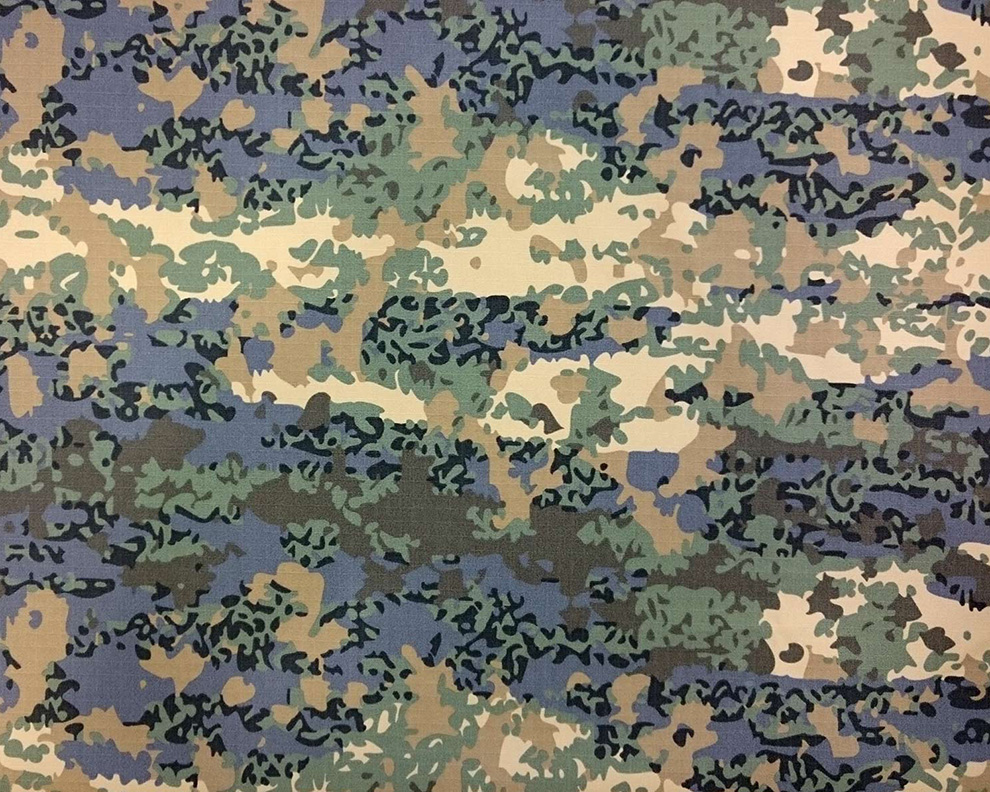
SUBSCRIBE TO UNLOCK OUR EXCLUSIVE CONTENT
Enter your email and get timely updates and relevant intel on tactical topics directly to your inbox.
You are signing up to receive updates via e-mail from which you can opt out at any time. Visit our privacy policy for more info.
Belarus
In 2008, Belarus followed the example set by Russia and introduced a pixelated camouflage pattern based on the old Russian VSR design. The pattern features very tiny pixels of black, reddish-brown and foliage green on a pale green background. It is presumed this will eventually replace all previously issued camouflage designs within the Belarussian Armed Forces.
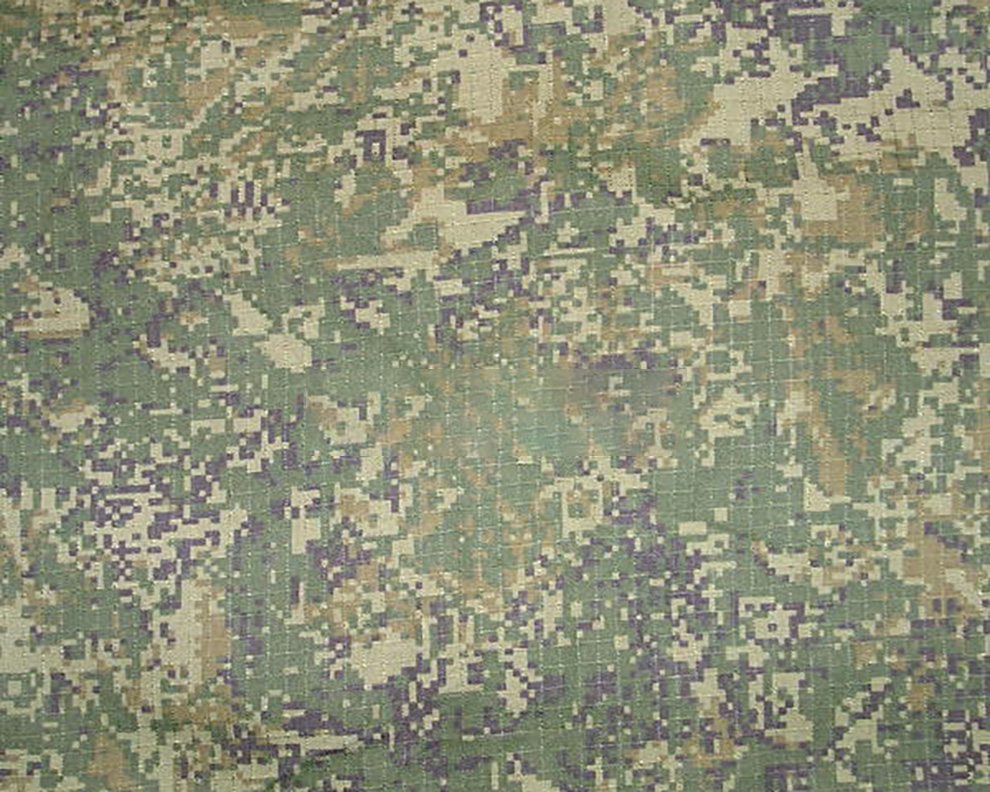
Belgium
The official camouflage pattern of the Belgian army has transitioned from the "Jigsaw" camouflage to Multicam. The Jigsaw camouflage was characterized by its distinctive blend of angular and irregular shapes in shades of green, brown, and black, designed to disrupt the wearer's silhouette and offer effective concealment, especially in woodland and forested terrains. This pattern was utilized by the Belgian Armed Forces since the late 20th century. However, with the introduction of the Belgian Defence Clothing System, it was declared that the Jigsaw pattern would be replaced by Multicam, starting from November 2022.
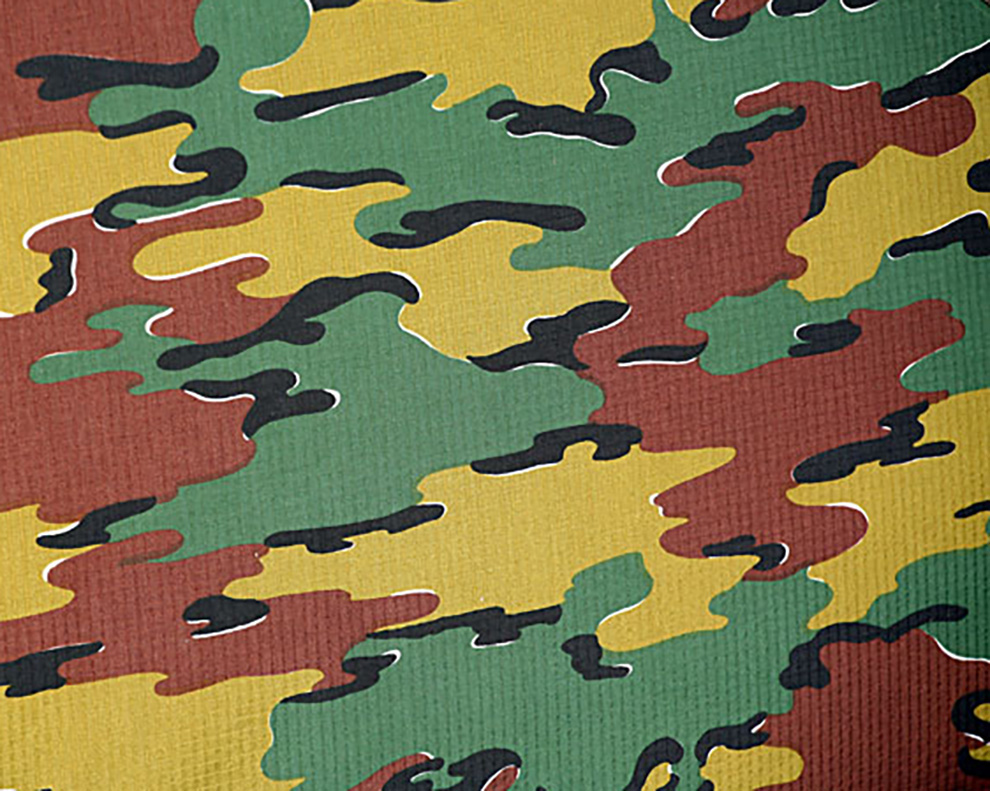
Bosnia and Herzegovina
The Armed Forces of Bosnia and Herzegovina were unified in 2005, and at that time, they needed a uniform for the newly founded Armed Forces. The MARPAT camouflage pattern was adopted on the official combat uniform of the AFBiH with the permission of the USMC and does not have the EGA embedded in the pattern. In 2023, a new uniform was introduced, carrying the same pattern.
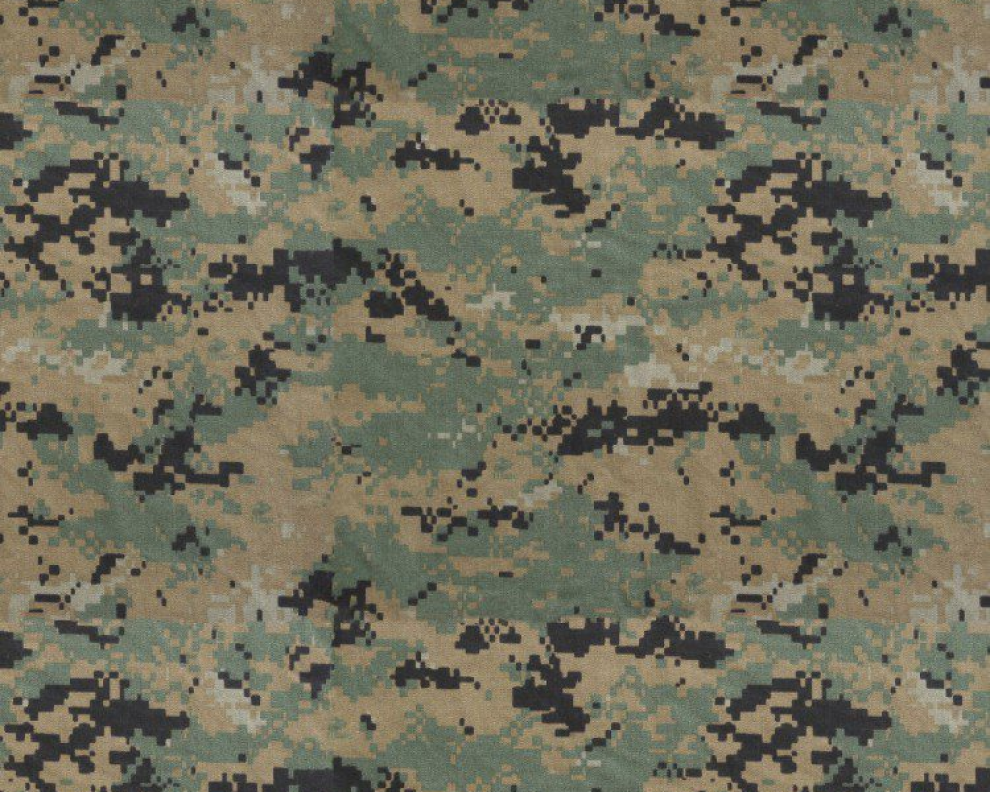
Bulgaria
In May 2018, the Ministry of Defense revealed a new series of pixelated camouflage designs to replace the previously issued DPM variants. Two of these patterns utilize the same color palette as the German Army's flecktarn and desert flecktarn patterns, while the third - having the same basic structure - will have a grey color palette for the Air Force.
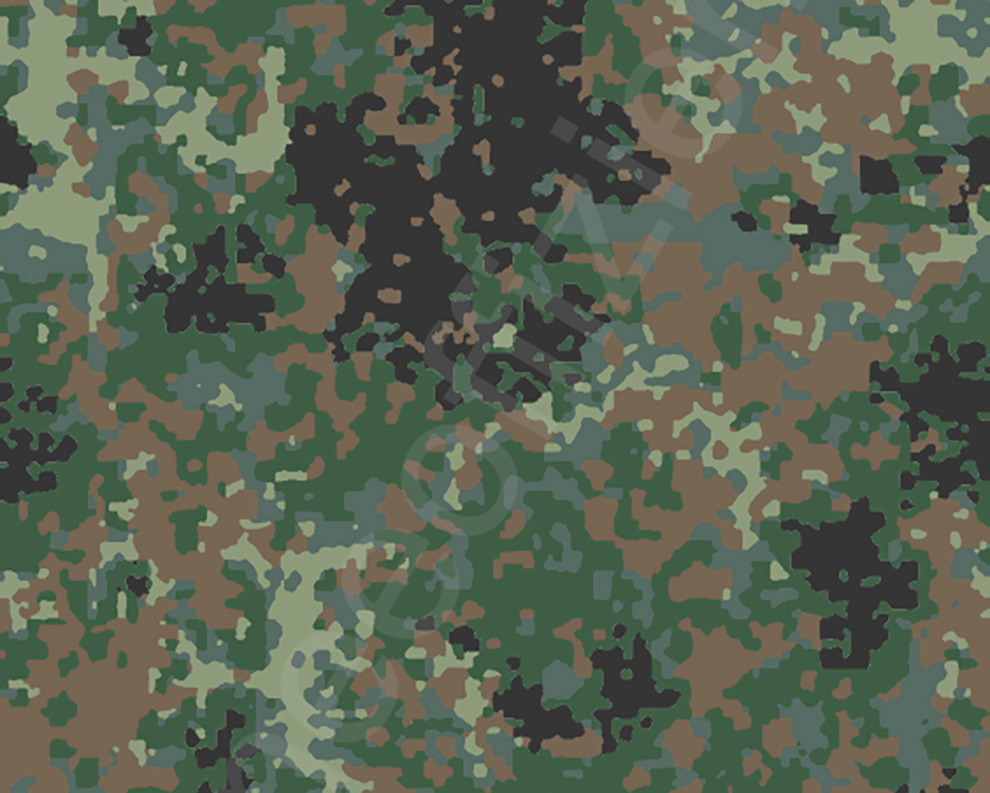
Croatia
In 2005 a series of three pixelated designs were introduced for the Croatian Armed Forces. The three designs are intended for deployment in temperate/woodland, desert and urban scenarios. Part of the camouflage design incorporates a digitized map of Croatia, whilst elsewhere in the pattern can be found the initials OSRH, which stand for Oružane snage Republike Hrvatske (Armed Forces of the Republic of Croatia).
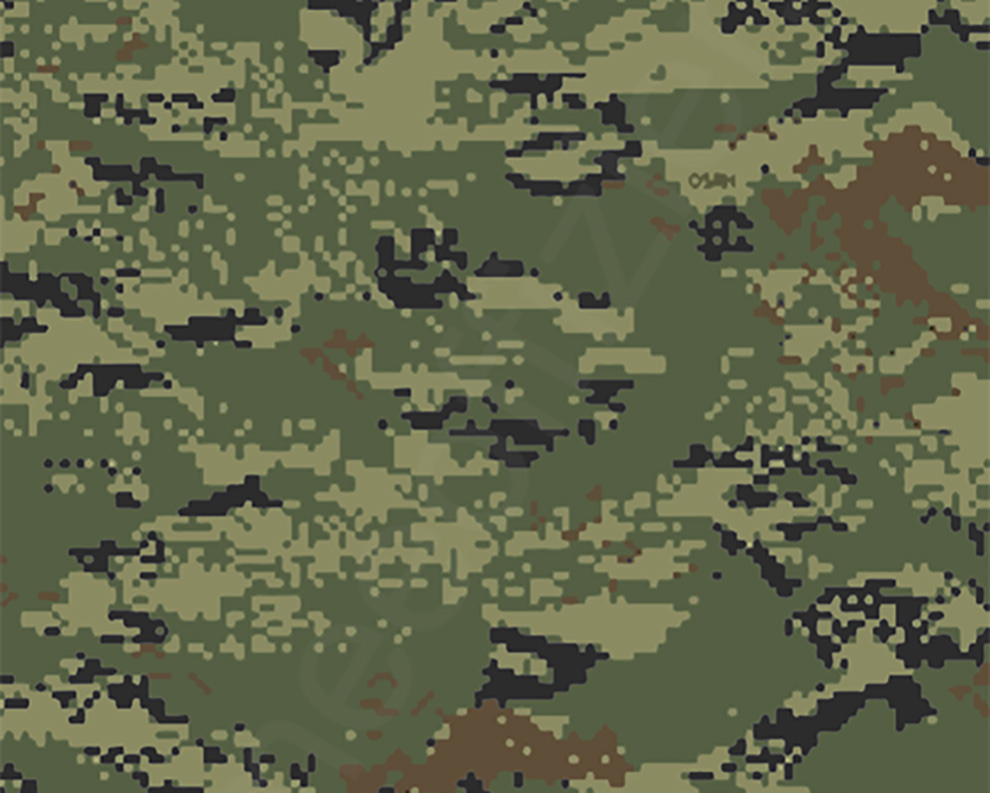
Cyprus
The Southern Cypriots use a camouflage pattern similar to the British one. Around 2003, a new camouflage pattern emerged for general issue to Cypriot National Guard ground forces. This pattern marked a complete departure from the traditional associations with the Greek Armed Forces. It consists of grey-green, stone, and medium grey shapes on a sand background.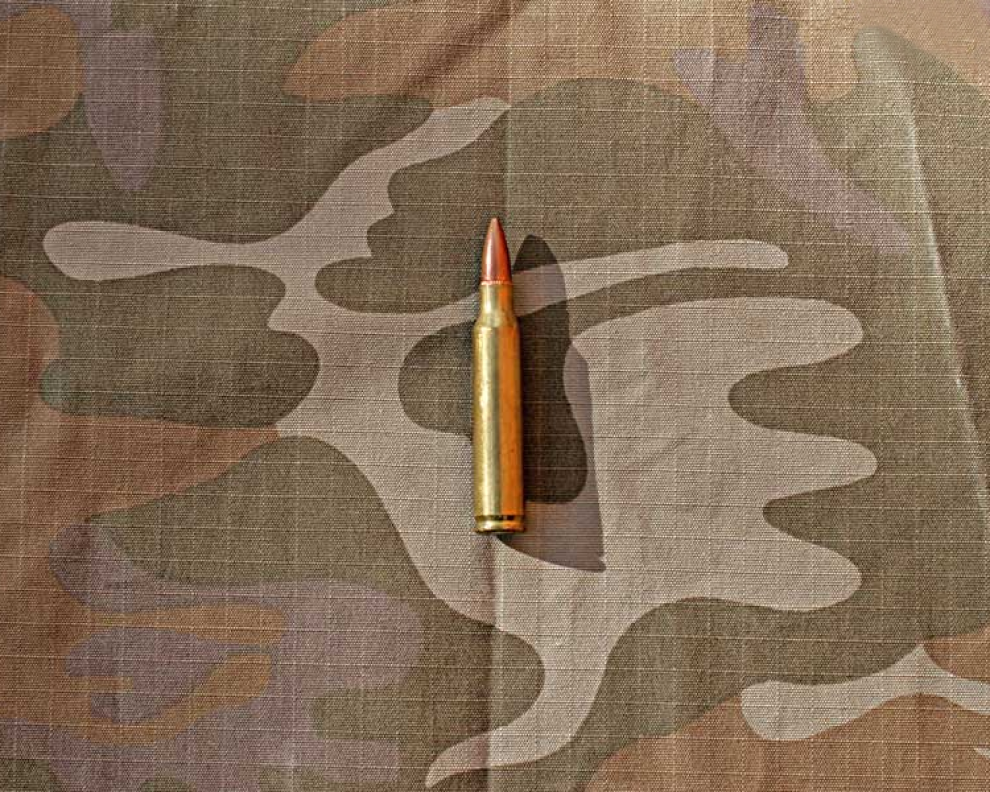
Czech Republic
In July 2022 the Czech Ministry of Defense announced that the Armed Forces would be adopting a new camouflage design to replace the VZ 95, one that would be effective at concealing troops both in the countryside and in urban operations. Officially designated MAD21 Camouflage Design Pattern 2021, the pattern was heavily influenced by Multicam and its derivatives fielded by the United States, Britain and Australia, and drew upon the expertise of the Department of Art Education at the University of Prague. Incorporating a color palette drawn from Multicam, the design itself does retain some elements of the Vz 95.
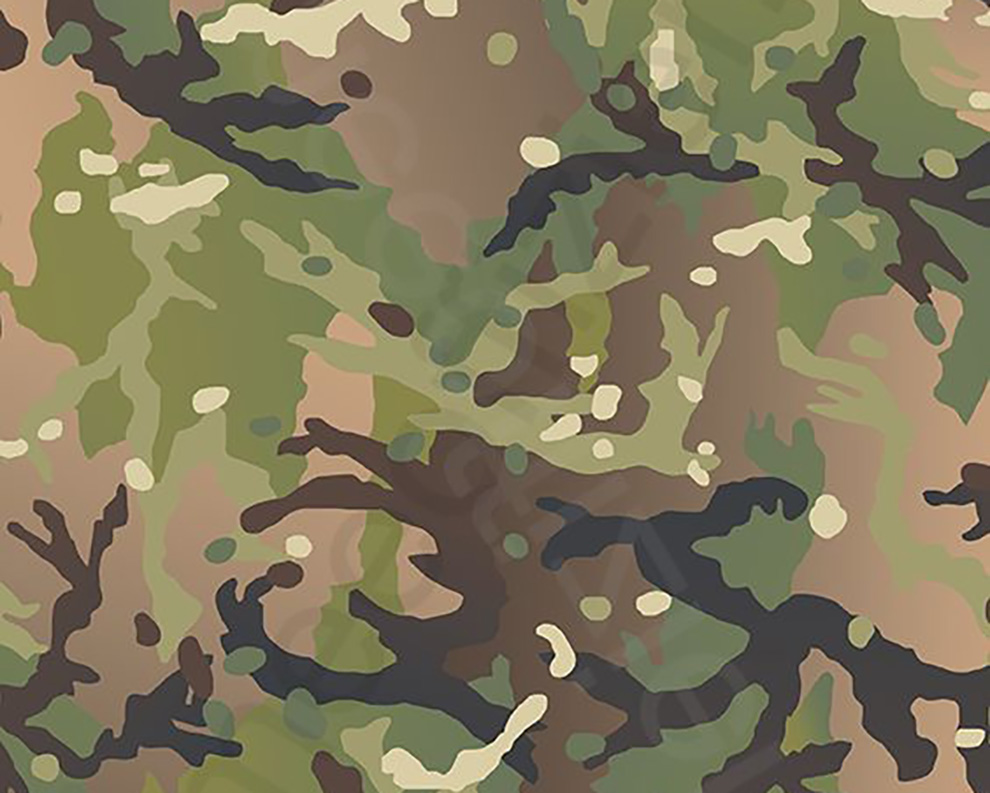
Denmark
The M/84 pattern, which has been the standard camouflage for the Danish Armed Forces since the 1980s. A desert variant of the standard pattern, known as M/01, saw continued use in subsequent deployments to Iraq and Afghanistan. However, Denmark eventually transitioned to the M/11 Multiterrænsløring (which translates to "Multi Terrain Blur,") as a universal pattern, replacing both the M84 and M/01.
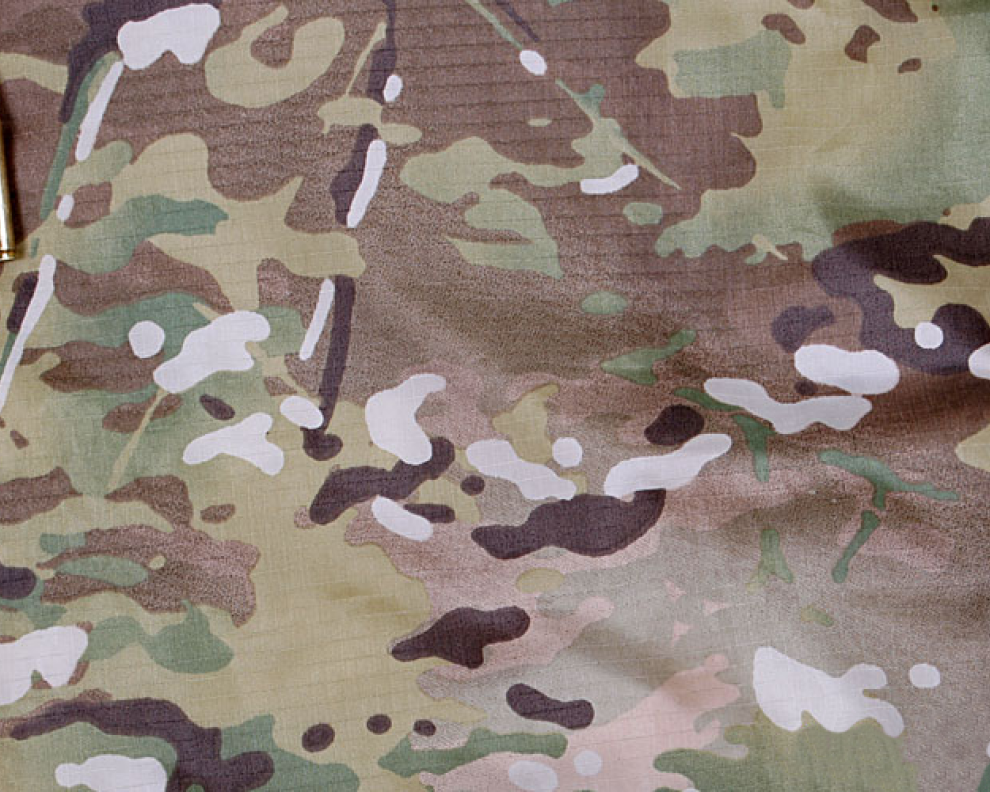
Estonia
The official Estonian military camouflage pattern, known as "ESTDCU" (Estonian Digital Camouflage Uniform), is tailored to suit the diverse terrains of Estonia. The most prominent version, which is widely recognized, showcases a digital design blending shades of green, brown, and black, reflecting the temperate forests and woodlands of the country.
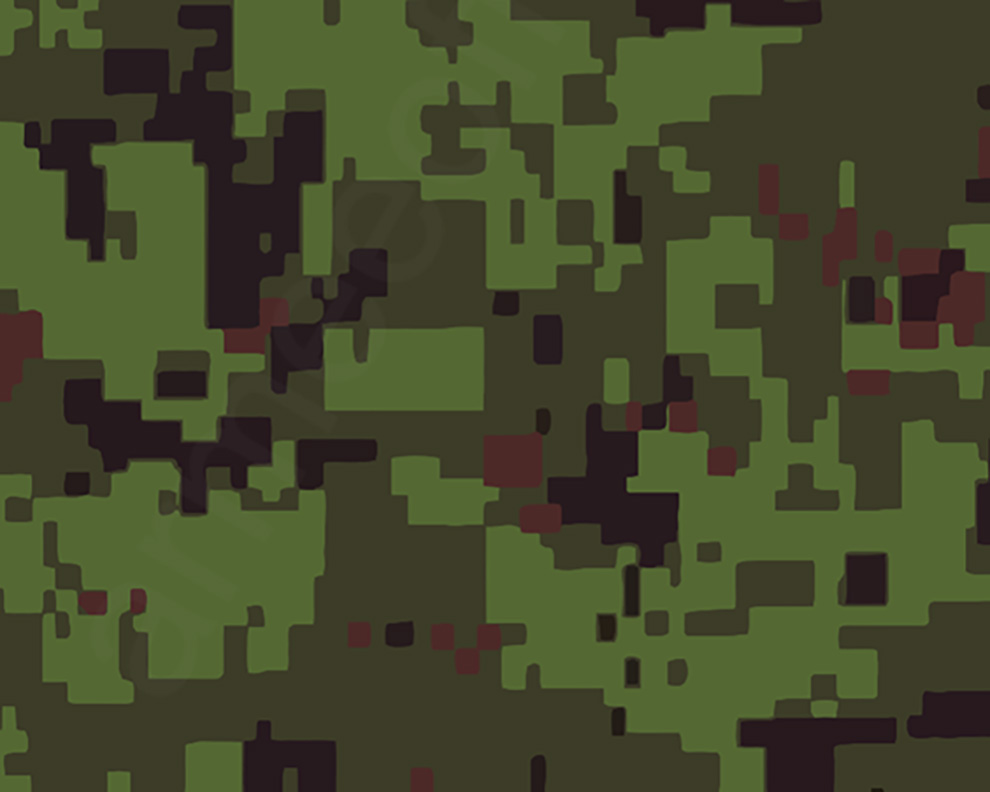
Finland
The official Finnish military camouflage pattern, known as "M05," consists of a family of patterns including woodland, snow, and desert variations. The woodland version, which is the most recognized, features a digital pattern with a mix of green, brown, black, and light gray shapes designed to mimic the Finnish forested landscape. Introduced in the 2000s, the M05 patterns are intended to provide effective concealment in various Finnish terrains and climates.
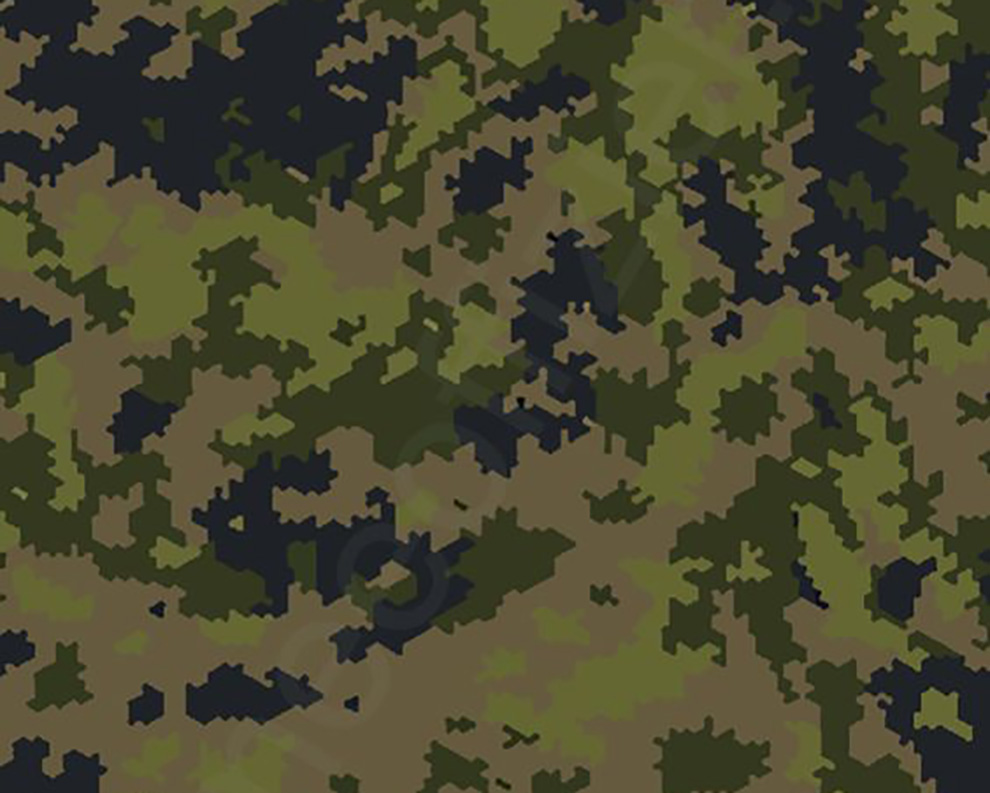
France
The official French military camouflage pattern, known as "CCE" (Camouflage Centre Europe), is characterized by its woodland design with a combination of dark green, light green, brown, and black shapes. Inspired by the temperate forests of Central Europe, the CCE pattern is designed to provide effective concealment in various European terrains. It has been the standard camouflage for the French Armed Forces since the early 1990s.
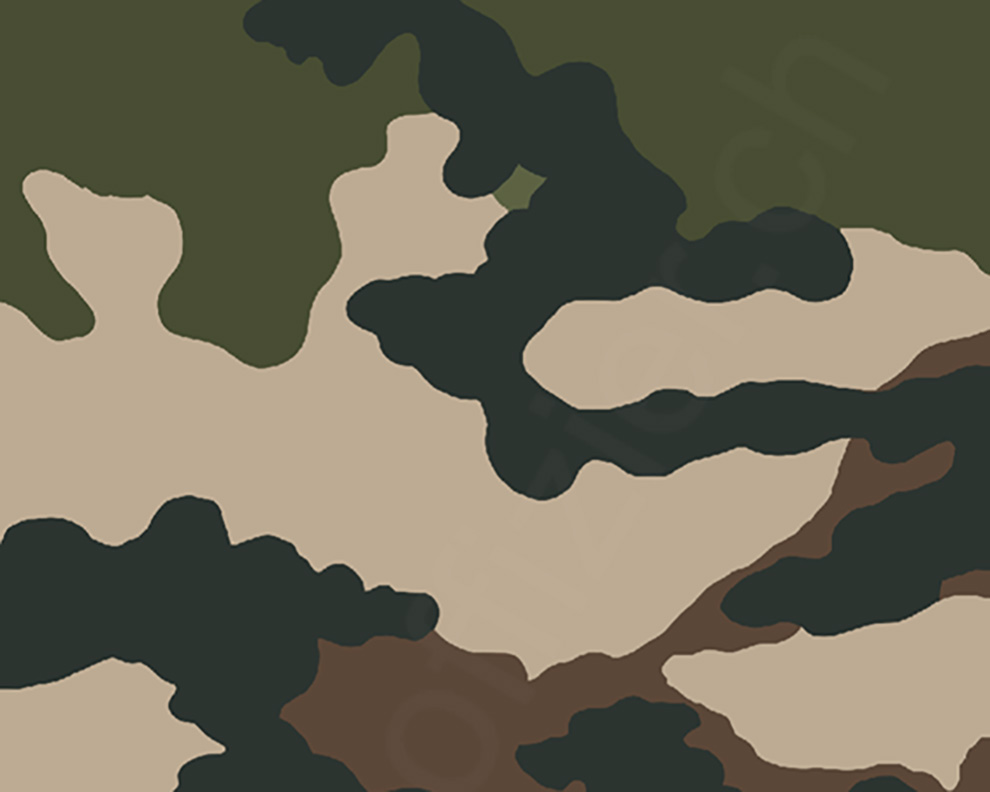
Germany
The official German military camouflage pattern, known as "Flecktarn," is characterized by its small, flecked spots in a mix of green, black, brown, and reddish-brown on a pale green background. This pattern is designed to provide effective concealment in temperate woodland terrains. Introduced in the 1990s, Flecktarn has been the standard camouflage for the German Bundeswehr and is recognized for its distinctive dotted appearance.
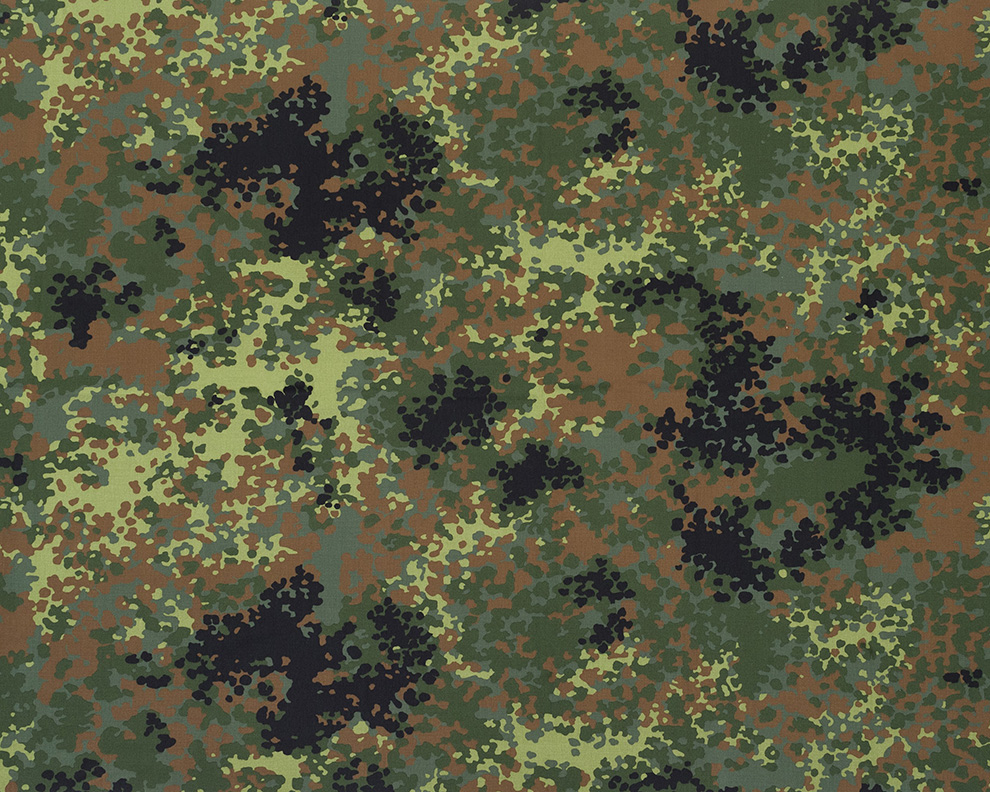
The "Multitarn," or multi-camouflage pattern, was first deployed in 2018 by the German SOF for their exclusive use. This pattern combines elements from the previous Flecktarn, improving on its shortcomings. A sixth color was added, and the colors are more blended and softened. To match the average brightness of most vegetation, dark and light green and brown, large areas of gray and beige are added as splashes of color, effectively covering different terrains typical for war zones in Mali, Iraq, and Afghanistan.
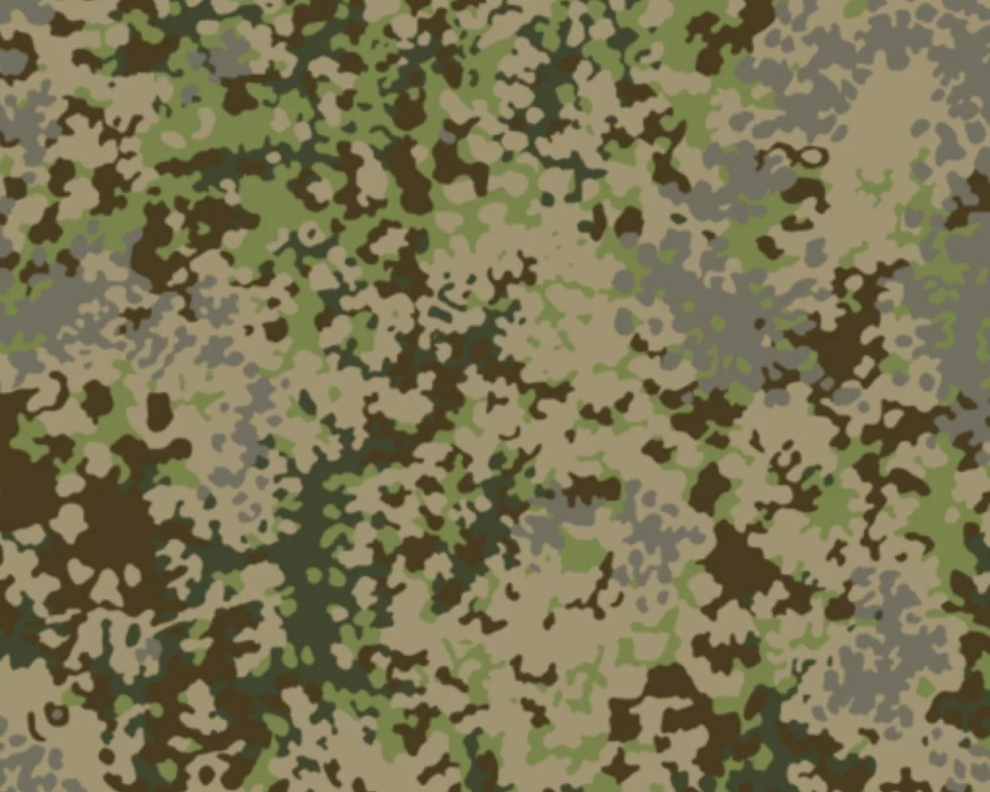
Greece
Based on classic French tenue leopard or 'lizard' design, the Hellenic camo is a 3-colour camouflage pattern, which consists of a number of irregular horizontal earth brown and medium green brushstrokes, printed on a light green background, and works great in dry woodland and arid environments of south Europe.
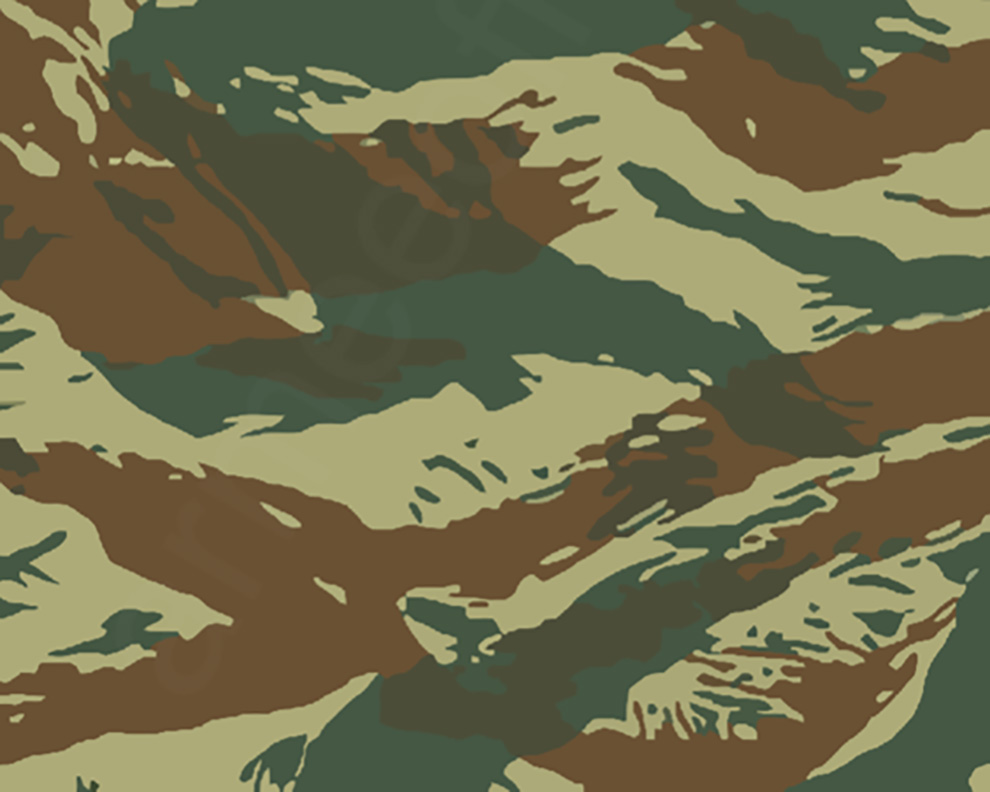
Hungary
The Hungarian camouflage pattern 2015M, also known as HunCam, is a family of 7-color camouflage pattern. First unveiled and designed in 2015, HunCam was designed for the use of the Hungarian Defence Force in varied environments, seasons, elevations, and light conditions.
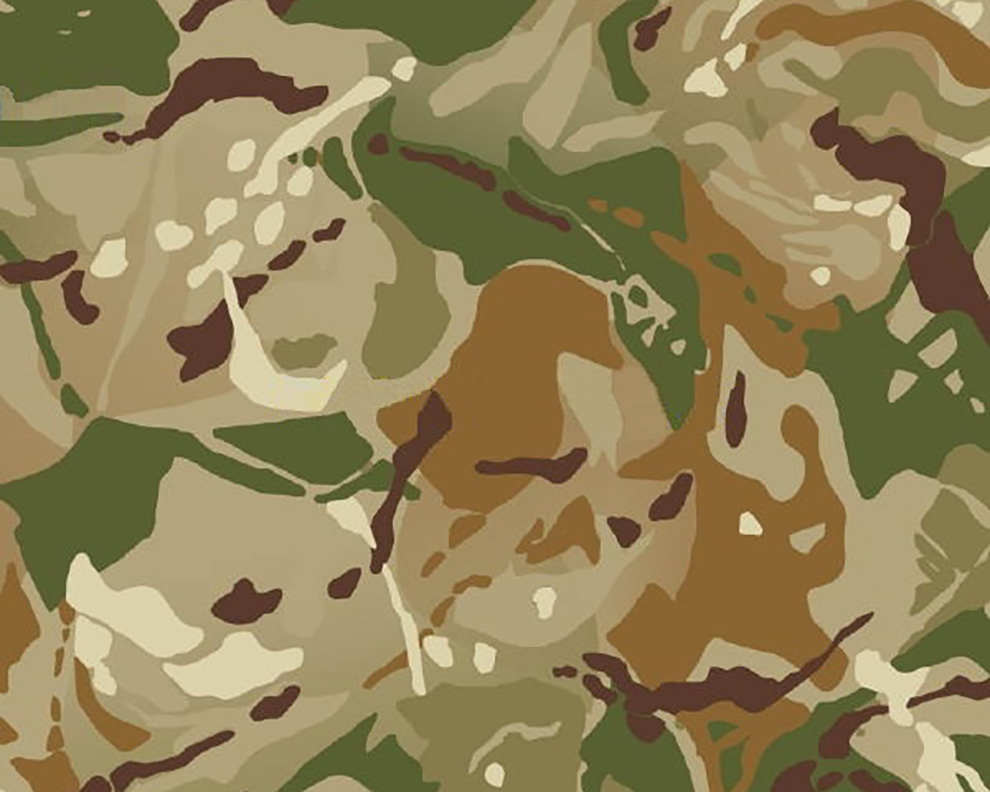
Ireland
The Irish DPM camouflage pattern was officially issued to military personnel in Ireland in March 2000, but had been issued to troops abroad for six months before that. Although also called DPM, the pattern has no relation to the British design of the same name. It is also sometimes mistaken for the French CE camouflage pattern, although in fact the two are quite different. Irish camouflage was designed by the Belgian firm Seyntex, and is a four-color pattern with black, reddish-brown and olive green shapes on a light olive green base. Typical of the wonderful sense of humour that permeates the country, the Irish refer to their camouflage pattern affectionately as "Paddyflage."
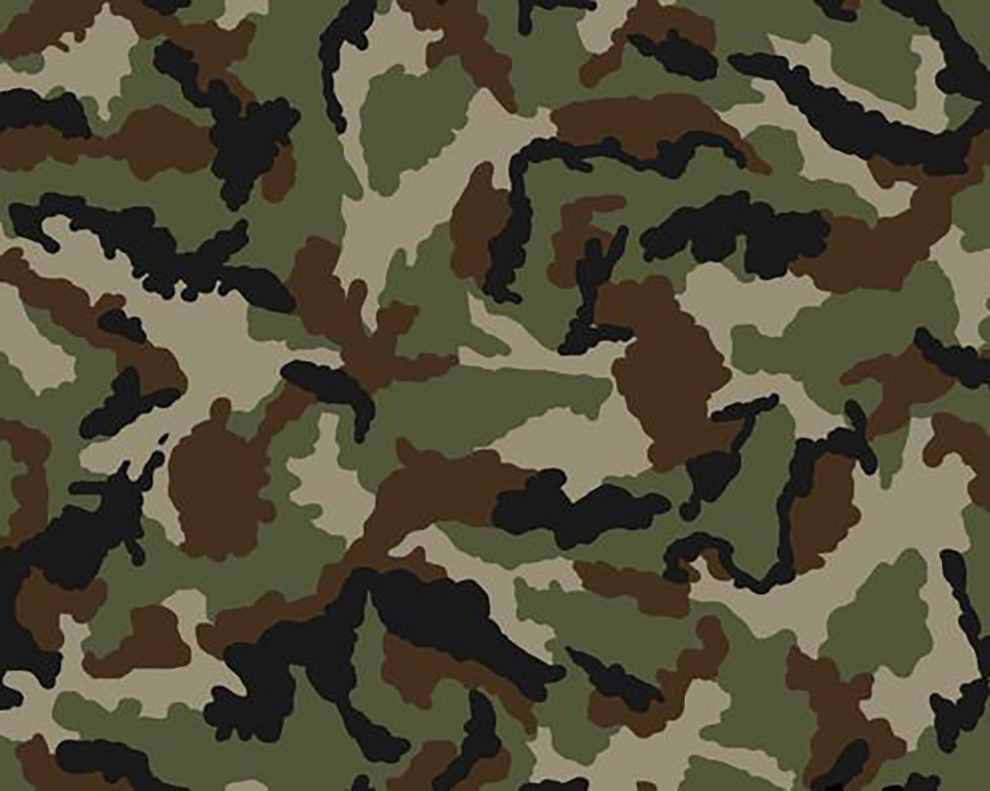
Italy
The current camouflage pattern of the Italian Army (Esercito) is mimetico Vegetata (vegetated pattern), introduced for general issue in 2004. This is a mottled pattern of chocolate brown, russet & olive-green shapes on a khaki base. Color variations of this pattern have been documented, a result of fabric lots being produced by different manufacturers.
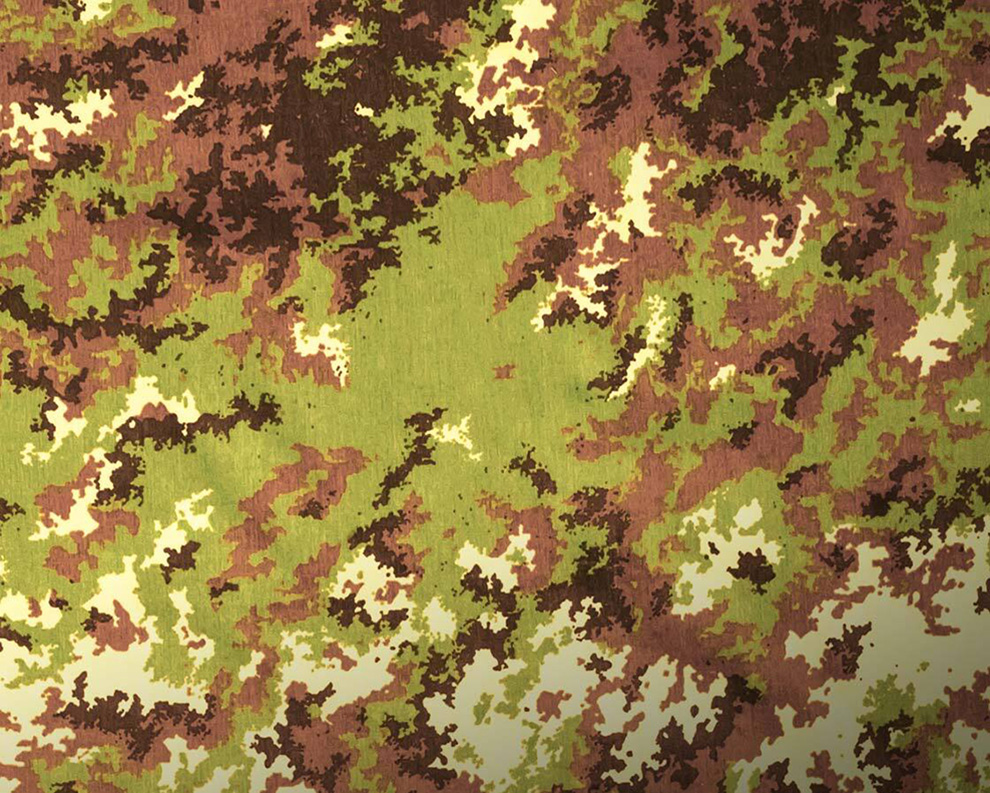
Latvia
The Latvian Ministry of Defence introduced the M20 WoodLatPat combat uniform on 22 April 2020, which has since been adopted by the National Guard. This new camouflage pattern, known as WoodLatPat (Woodland Latvian Pattern), is a departure from the previous four-color M07 LatPat and its five-color M16 Multi-LatPat derivative. The WoodLatPat design can best be described as a Splinter-type pattern, contrasting with the earlier patterns that had a more Digital-type appearance with larger square 'pixels'. The WoodLatPat features straight-edged and angular designs, with colors that include variations of Wheat, Tan, Peru, SaddleBrown, and OliveDrab. This pattern is designed to provide effective concealment in various terrains found in Latvia.
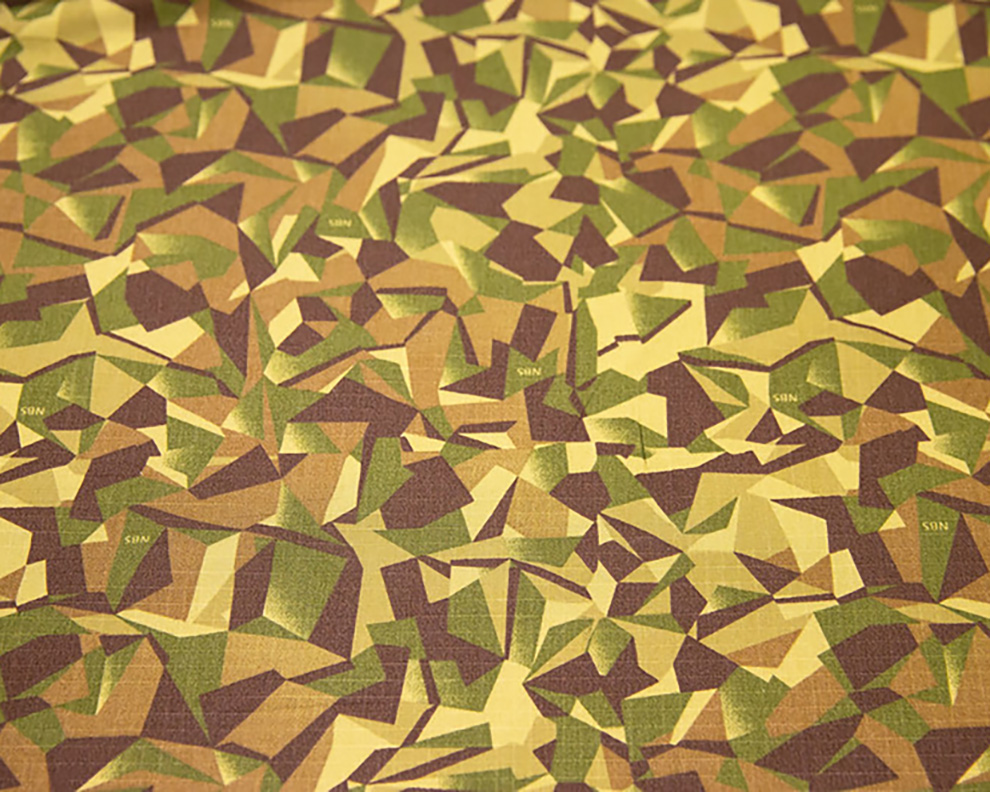
Lithuania
The previous Lithuanian M05 misko (forest) four-color pattern, first adopted in 2002, was replaced with a more universal pattern in 2018 and has since become the standard operational uniform for the Ground Forces. This new design doesn't stand out as much in non-wooded areas compared to its predecessor, which featured a noticeable green print ideal for forested environments.
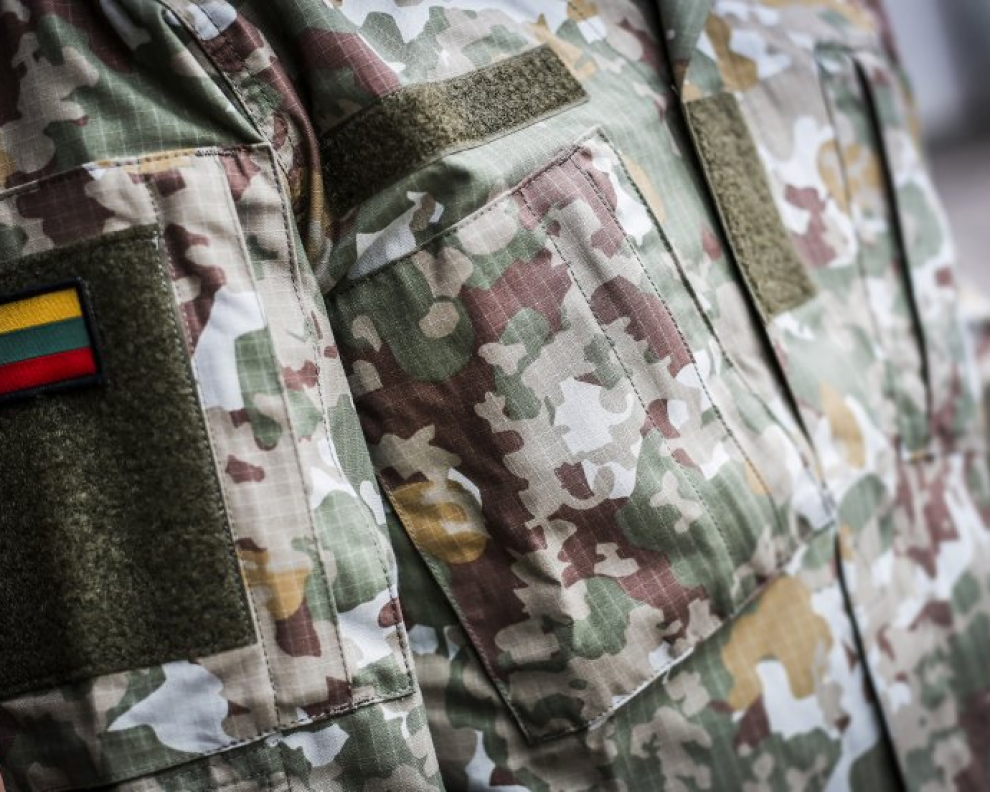
Luxembourg
Circa 2010–2011, Luxembourg introduced a new pattern for its own Army, a temperate design somewhat similar to the Finnish M05.
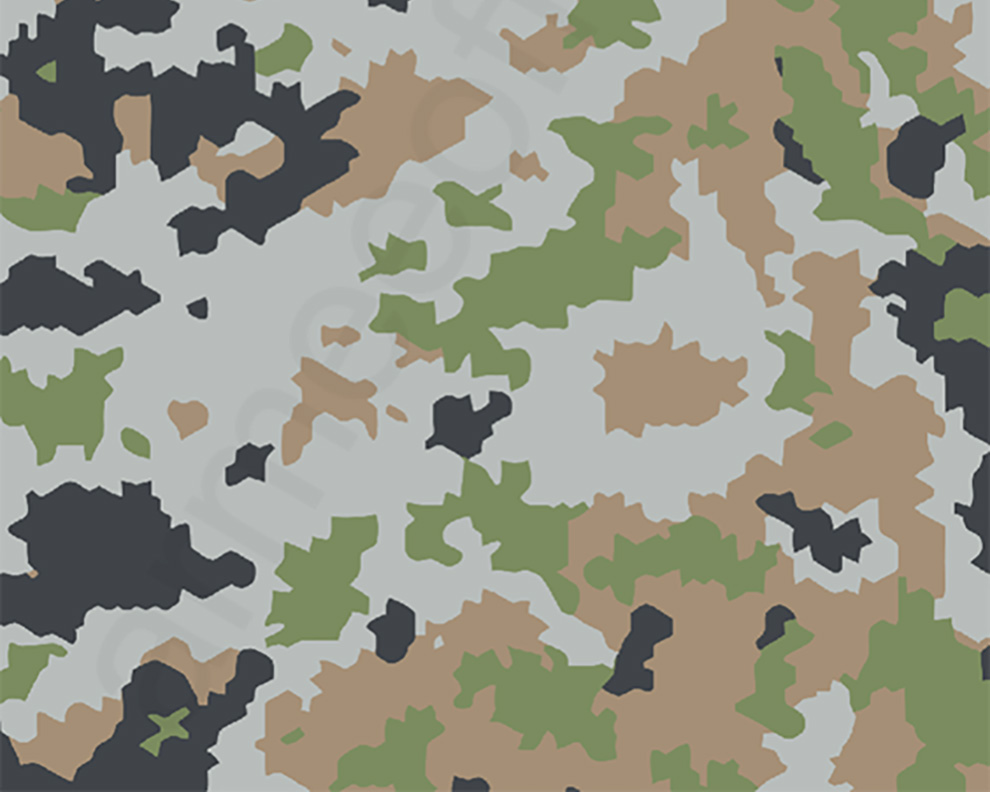
Malta
The AFM adopted a copy of Multicam for general issue. Uniform design still seems to follow the British model, but the pattern is certainly Multicam and not MTP.
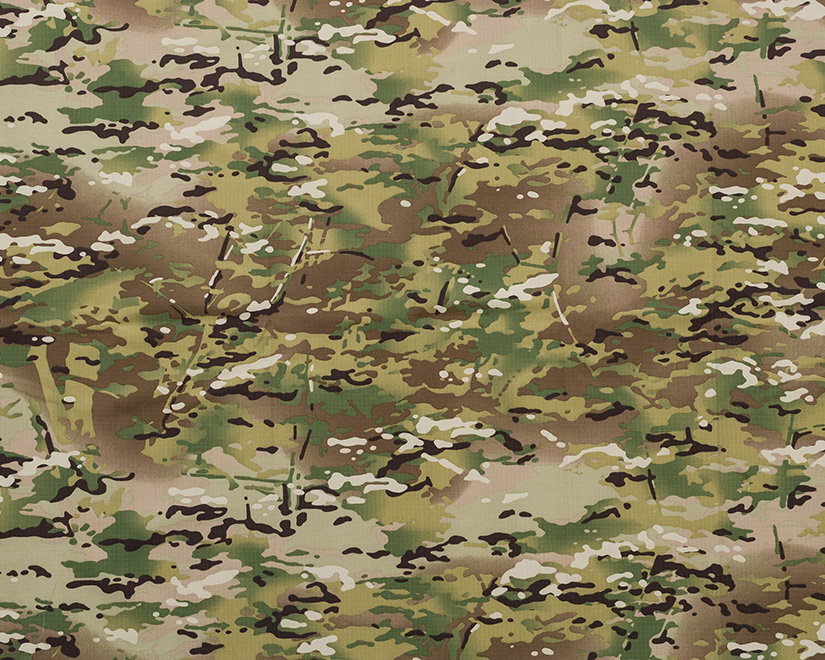
Moldova
The standard camouflage pattern of the Moldovan Armed Forces since 1996 has been a copy of the US m81 woodland design. The Soviet BDU-style uniforms are currently made locally, but may also have been imported from Asia or the Ukraine. Some mild color variations have been documented.
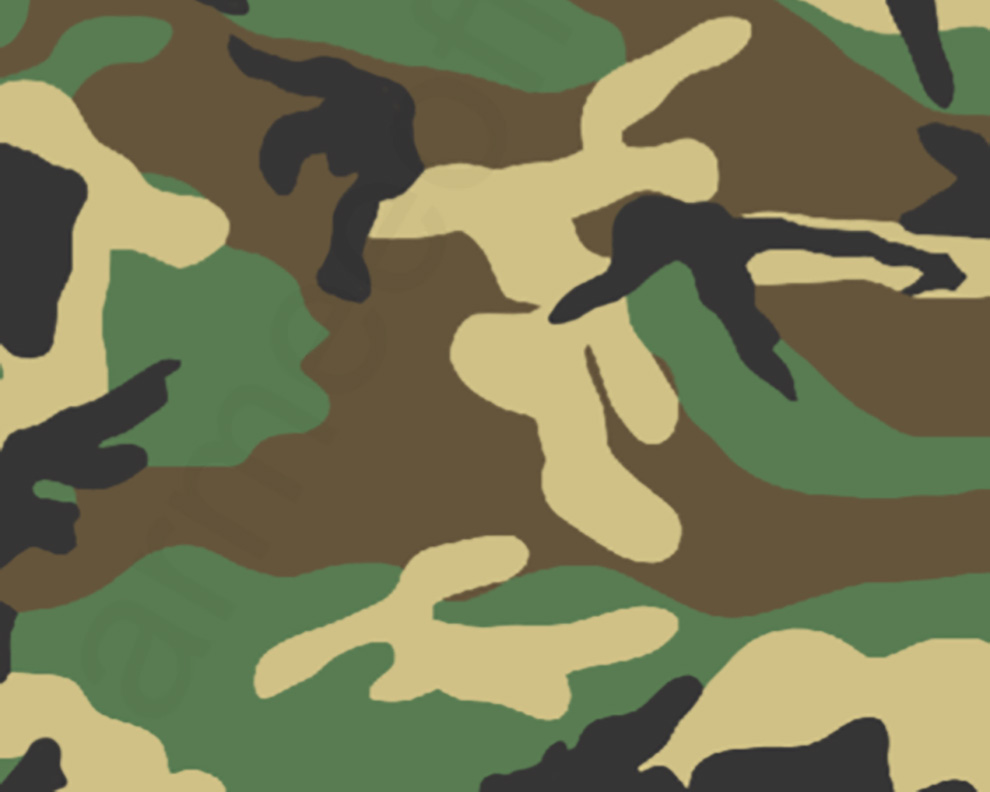
Montenegro
Circa 2009, Montenegro adopted a variation of the Multicam design incorporating a slightly different combination of colors and having a small image of the outline of the nation embedded into the design.
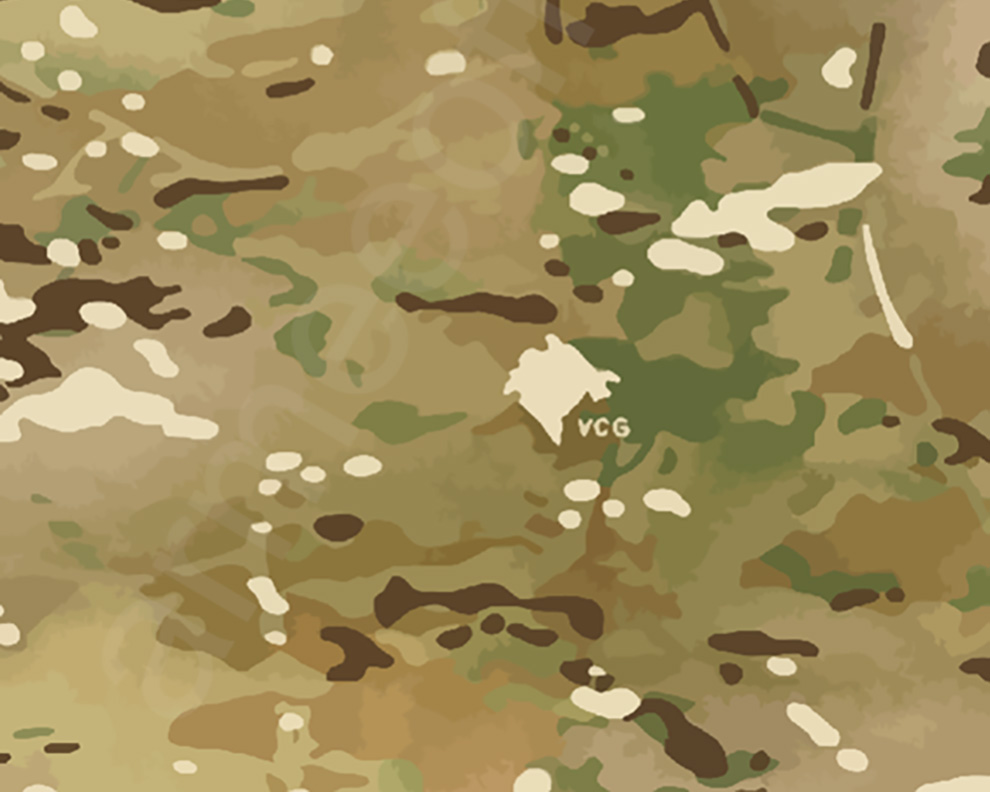
Netherlands
In 2011, the Dutch Army released prototypes of a new fractal camouflage pattern. Referred to by several sources as Netherlands Fractal Pattern (NFP), three versions have thus far been released: a temperate/woodland version (NFP Green), an arid/desert version (NFP tan), and a so-called "transitional" design for implementation on field equipment. The latter would theoretically perform well in all environments and would necessitate soldiers only being issued a single set of field equipment. The first uniform pieces began to be issued in 2021; in 2022, the first complete uniforms were issued and will start replacing the DPM design.
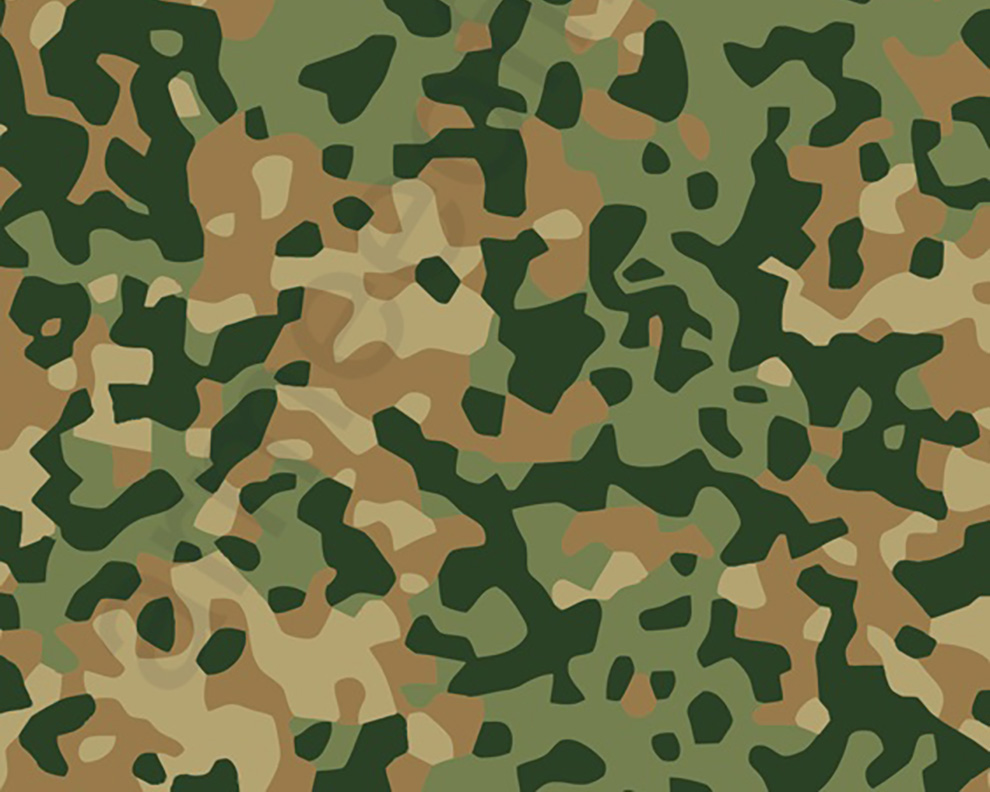
North Macedonia
Introduced in 2009, the Macedonian Armed Forces have adopted a temperate "digital" camouflage pattern incorporating black, brown and light olive on a green field. A desert version of the pattern has also been adopted, incorporating spice brown, mint green & off-white on a sand-colored field.
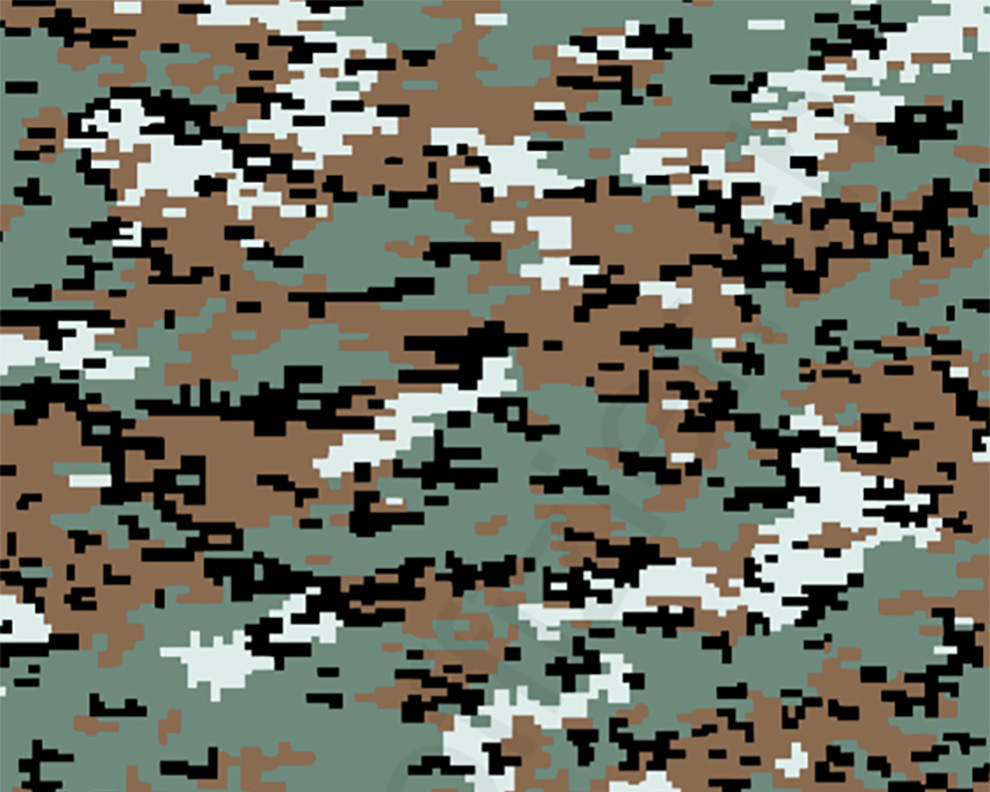
Norway
The M98 camouflage pattern, utilized by the Norwegian military since the late 1990s, features a digital or pixelated design composed of small rectangular pixels in a mix of green and brown shades.
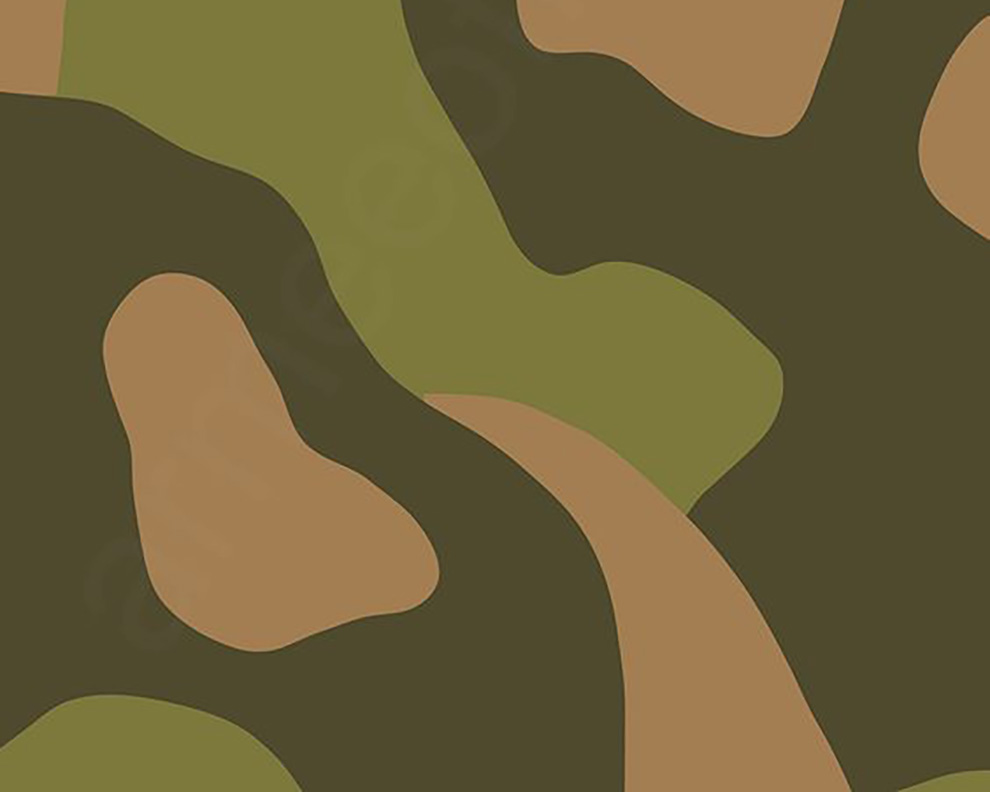
Poland
The wz. 93 pantera has become the standard camouflage of the Polish Armed Forces. It is the successor of Camouflage wz. 89 Puma, and entered service in 1993. It differs from Puma in having stronger contrast, resulting in better disruptive camouflage.
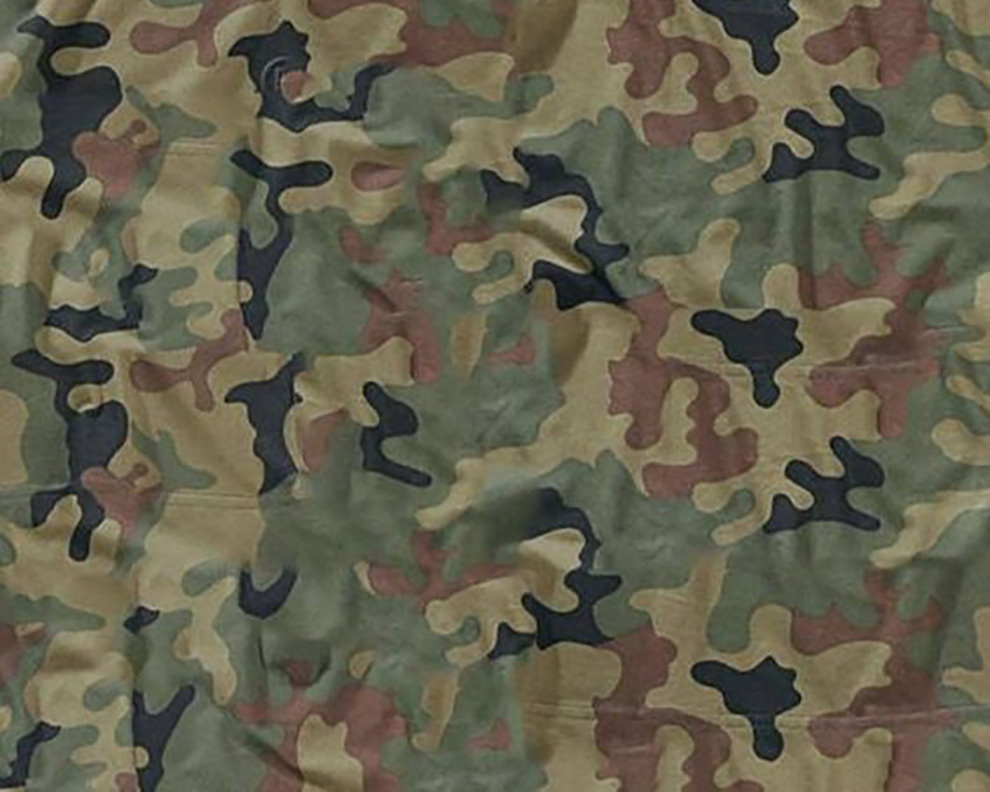
Portugal
In February 2018, it was announced the armed forces would adopt a new camouflage pattern, the M18, or padrão multi-terreno (multi-terrain pattern). The design, developed in cooperation with CINAMIL (Centro De Investigação Desenvolvimento e Inovação da Academia Militar) or Investigation Center for Development and Innovation of the Military Academy, appears to utilize a five-color palette similar to that used for Multicam, but with shapes obviously influenced by German flecktarn.
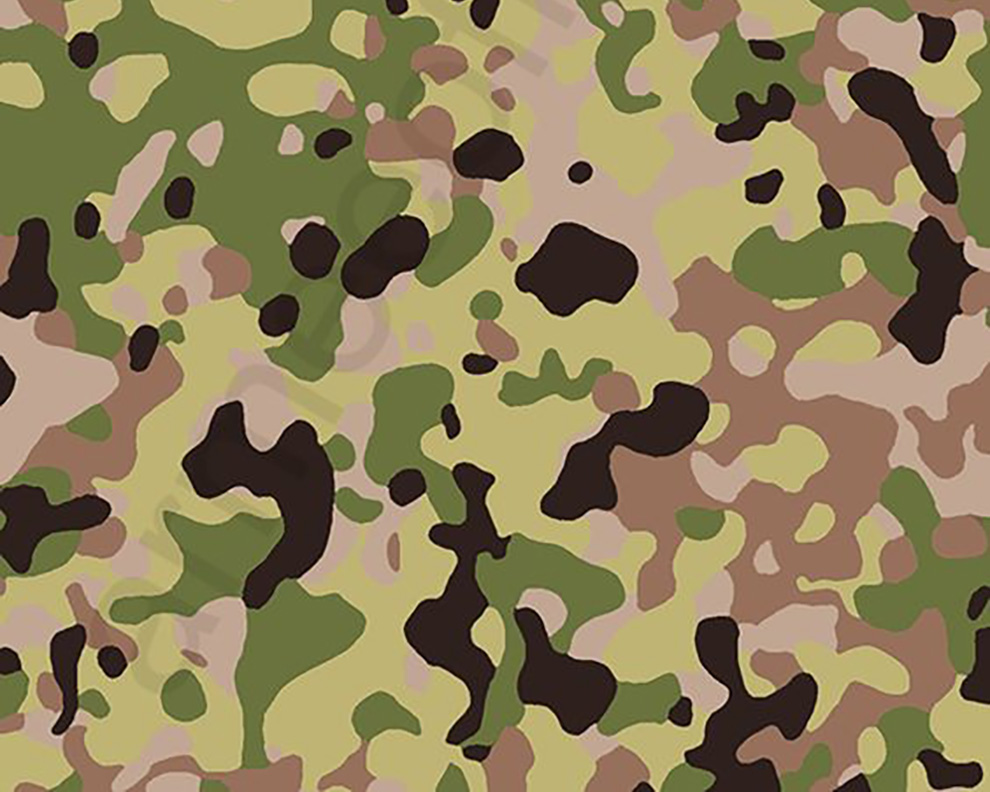
Russia
In 2008, Russia introduced a pixelated camouflage design intended to replace the VSR and Flora patterns. Officially called единая маскировочная расцветка (Edinaya maskirovochnaya rascvetka) or EMR, translating roughly as Unified Camouflage Coloration (in this sense the word "unified" refers to the fact that it is common to all the armed forces of Russia). The pattern is often referred to as Tsifra, Tetris or "digital flora." Several variations of this pattern have been produced, the most common of which is the leto (summer) variant incorporating tiny pixels of black, reddish-brown and foliage green on a pale green background. Other versions include sever (northern regions), zima (winter), and gorod (urban). Full-scale adoption began in 2011.
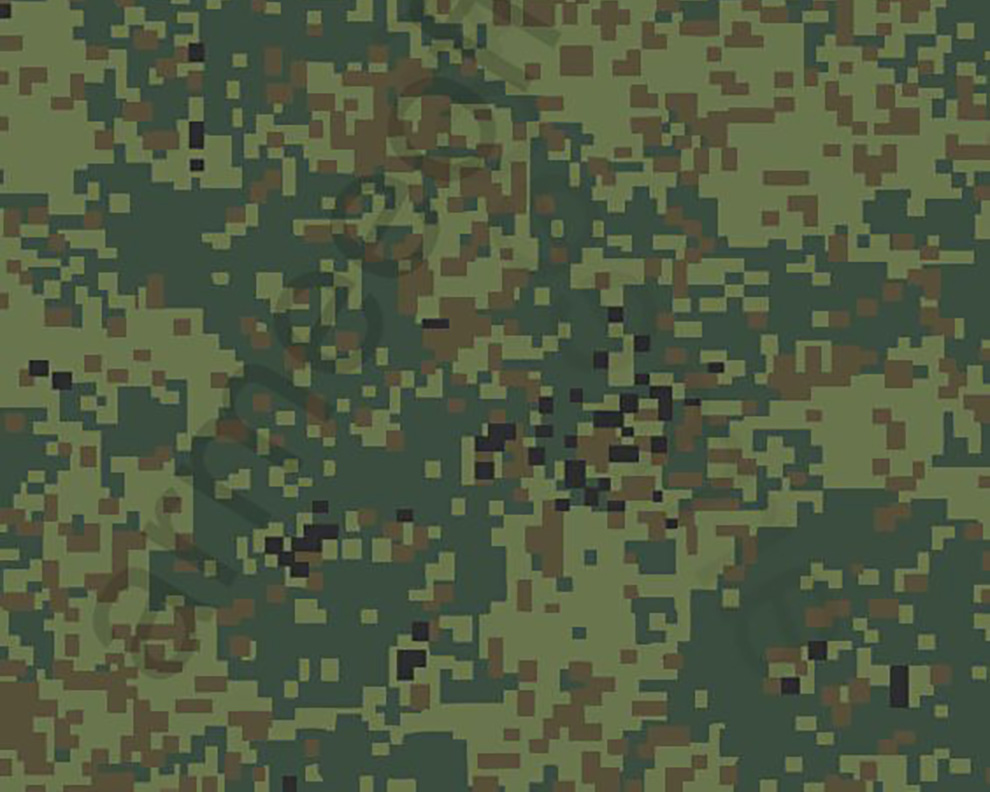
Serbia
A new pixelated camouflage design has been introduced for use by the Serbian Army since the fall of 2010, designated M-MDU-10. Designed by the Military Technical Institute (VTI), it is slightly fragmented, scaled-down and pixelated version of the M-MDU-02 camouflage pattern.
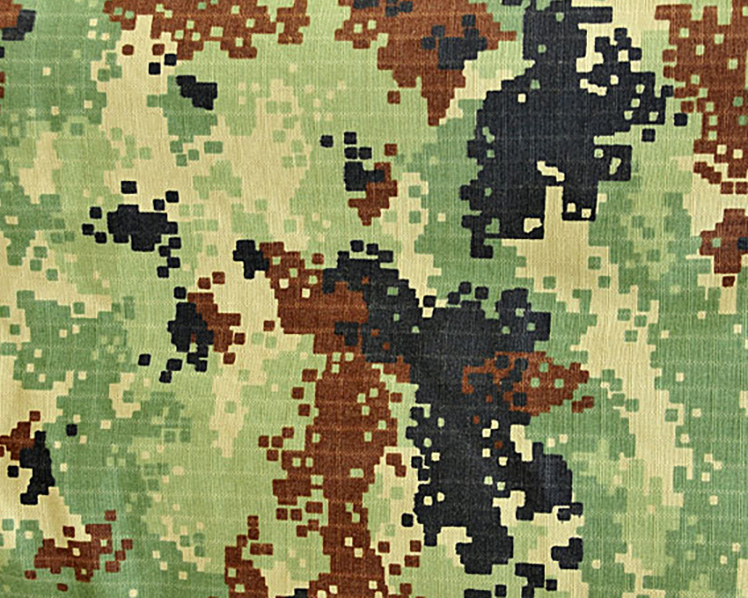
Slovakia
Slovakia introduced a series of two new camouflage designs in 2007. Officially named vz 2007 Les (forest) pattern, the temperate version features brown, dark green, & khaki square and rectangular shapes in various sizes on an olive green field. Unofficially, the pattern is nicknamed Kocky (cubes).
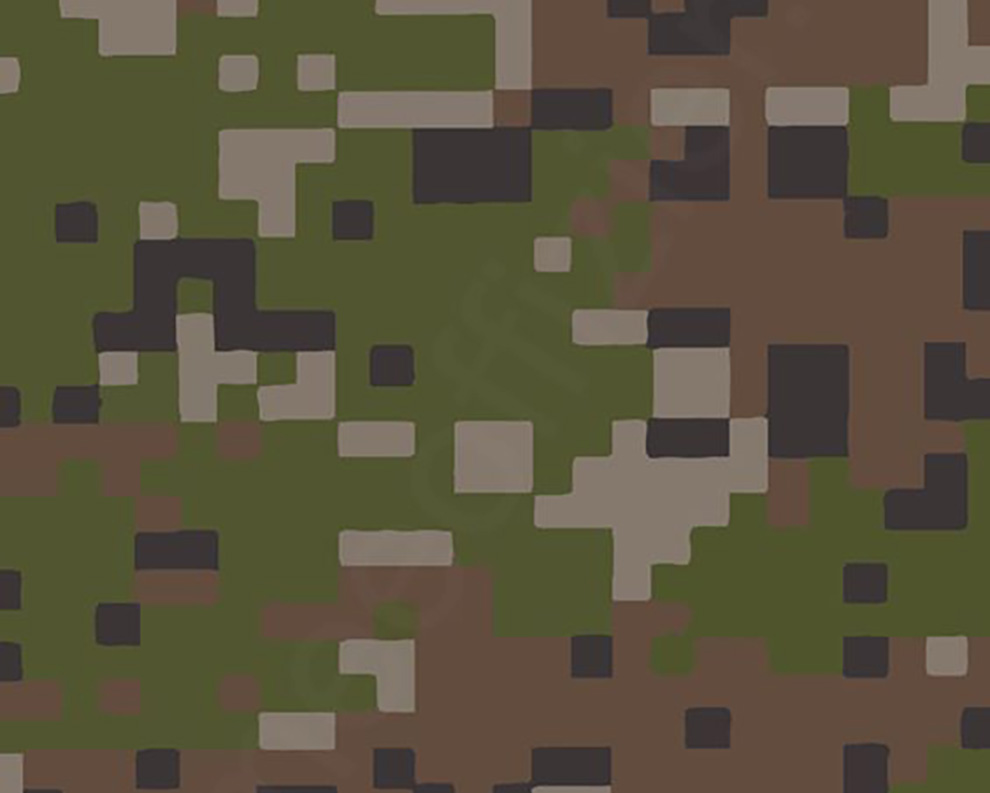
Slovenia
SloCam—short for Slovenia Camouflage—was developed for concealment in various types of vegetation. It was introduced in 2010 by Slovenian MoD as the official standard-issue camouflage for the Slovenian army.
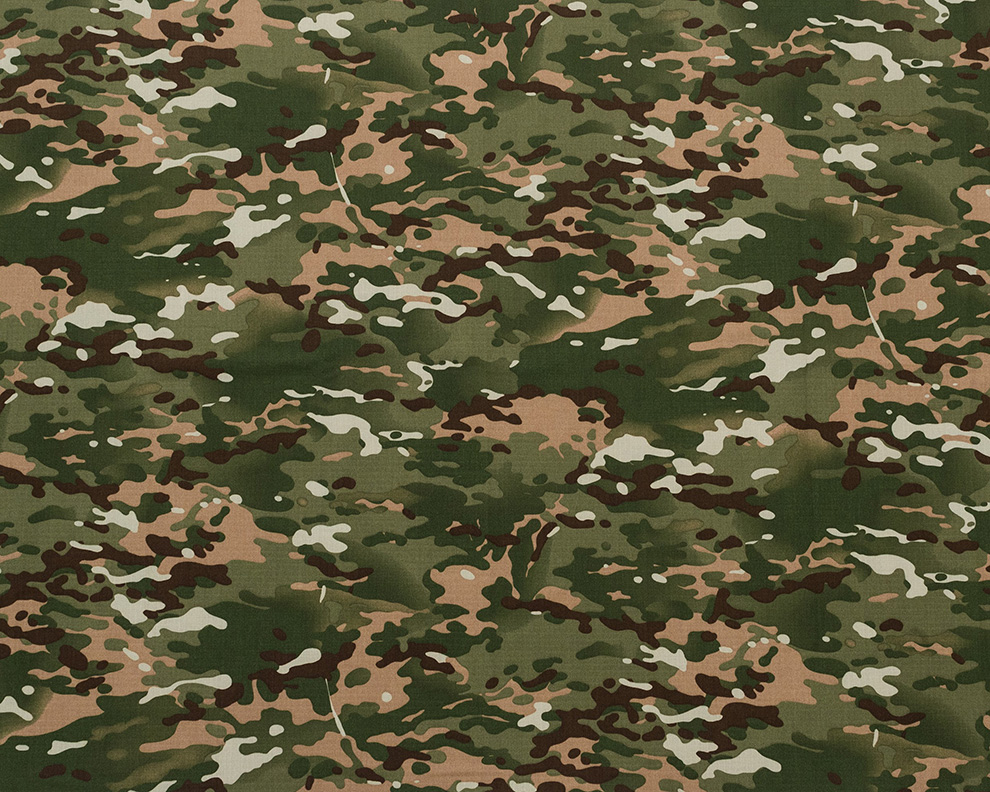
Spain
In December 2009 the Army revealed a series of two new pixelated patterns intended to replace the previous leaf pattern- the M09 Ejercito pixelado boscoso (woodland) pattern.
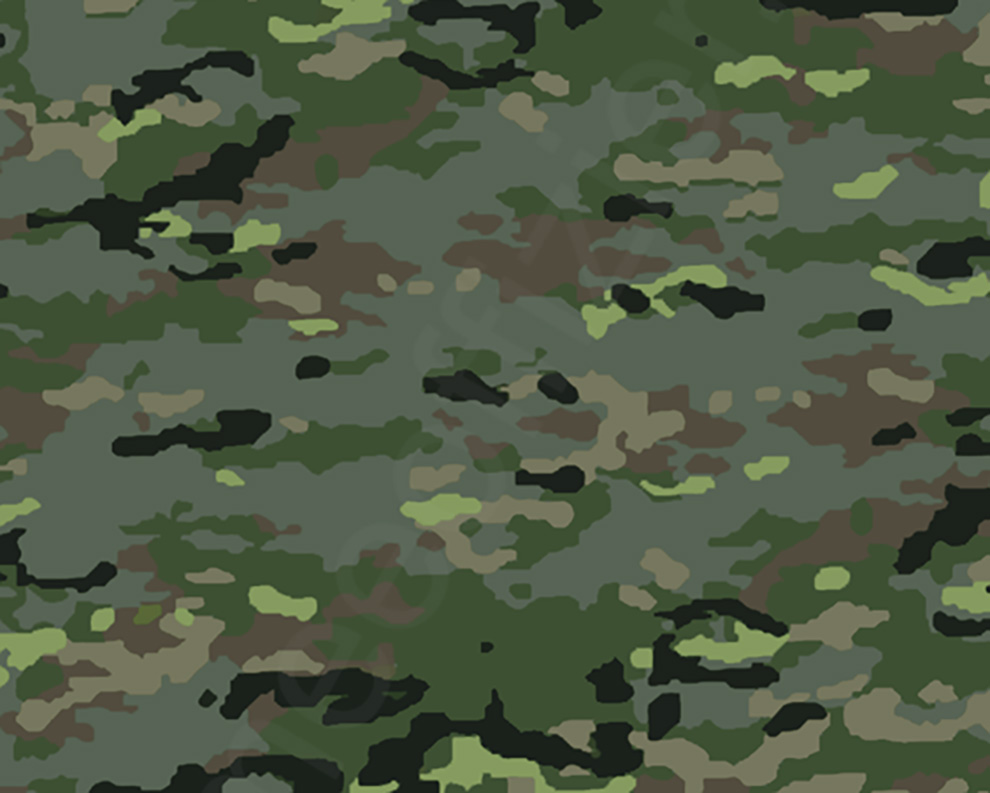
Sweden
The M90 camouflage is a geometric pattern primarily used by the Swedish Armed Forces. Introduced in the 1990s, it consists of hard-edged, sharp patterns in a combination of green, black, dark green, and light green, meant to be effective in the forests and rocky terrains of Scandinavia.
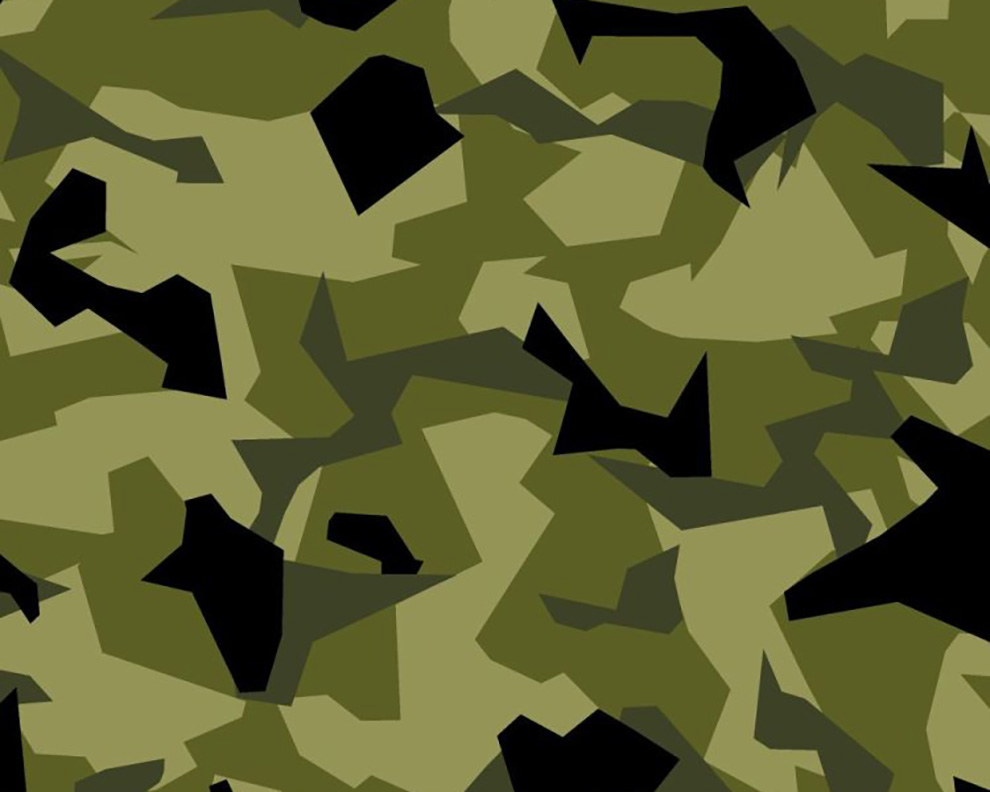
Switzerland
The TAZ 90 (TarnAnZug in German and TASS 90 in French) is the camouflage patterns for current standard issue battledress and service dress uniform of the Swiss Armed Forces. The four-colour pattern consists of tan, brown, green and black and is a development of the Taz 57 and Taz 83 (the "Alpenflage") patterns which it replaced in the early 1990s. Even so, the pattern is based on the alpenflage, but with the deletion of the white spots and the red colour found in the alpenflage, along with minor changes.
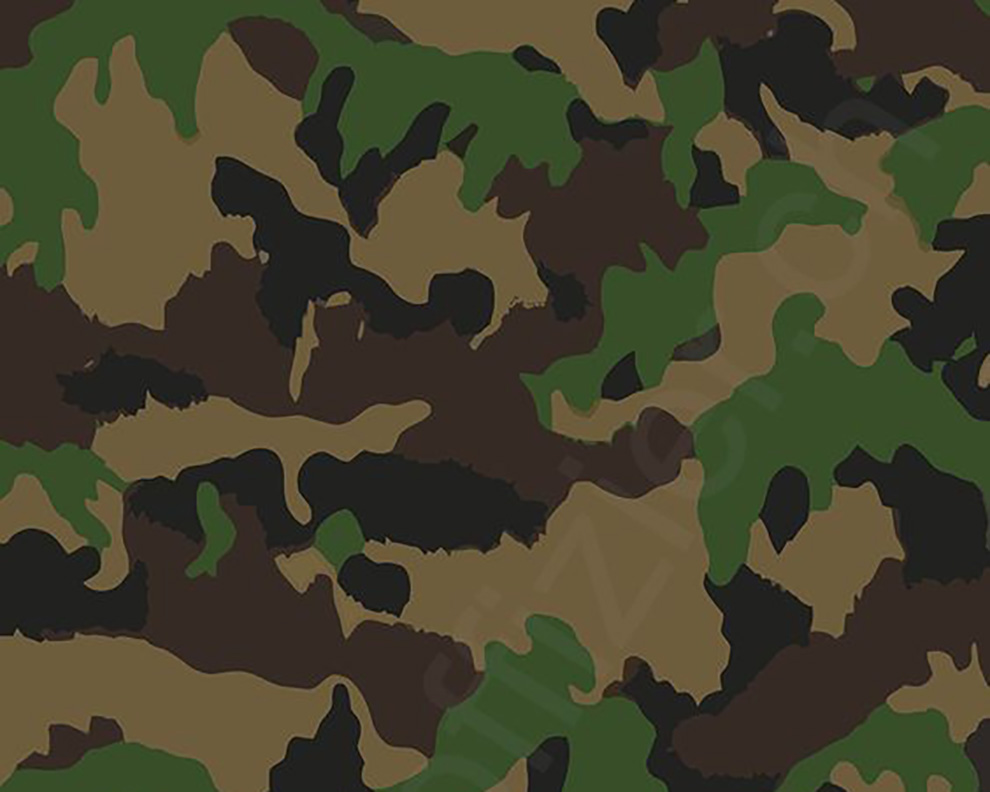
Ukraine
First observed in 2014, an arid/desert pixelated camouflage design has been adopted by the Ukrainian Armed Forces, including elite units such as the Airborne Forces. This design blends areas of brown, khaki, and light olive on a sand-colored background. It is referred to by some Ukrainian sources as MM-14.
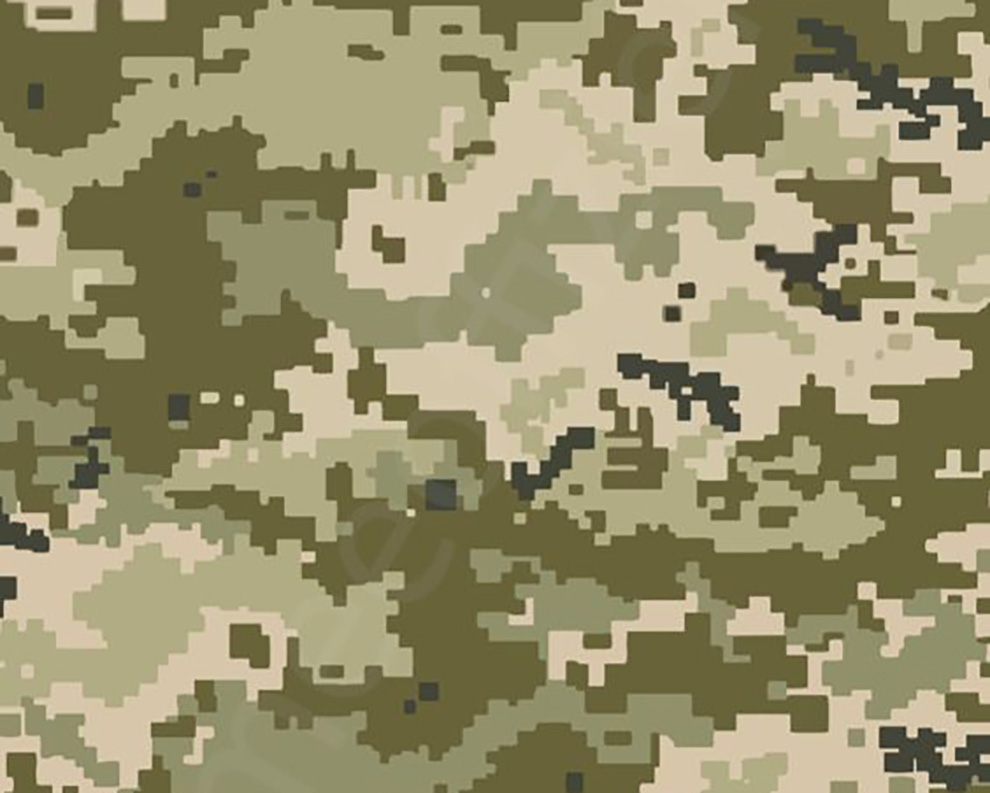
United Kingdom
The official camouflage pattern for the United Kingdom's Army was the Multi-Terrain Pattern (MTP). The MTP is a versatile camouflage pattern designed for use in a variety of environments, including woodland, desert, and urban settings. It replaced the earlier Disruptive Pattern Material (DPM) camouflage, which was in use for several decades.
